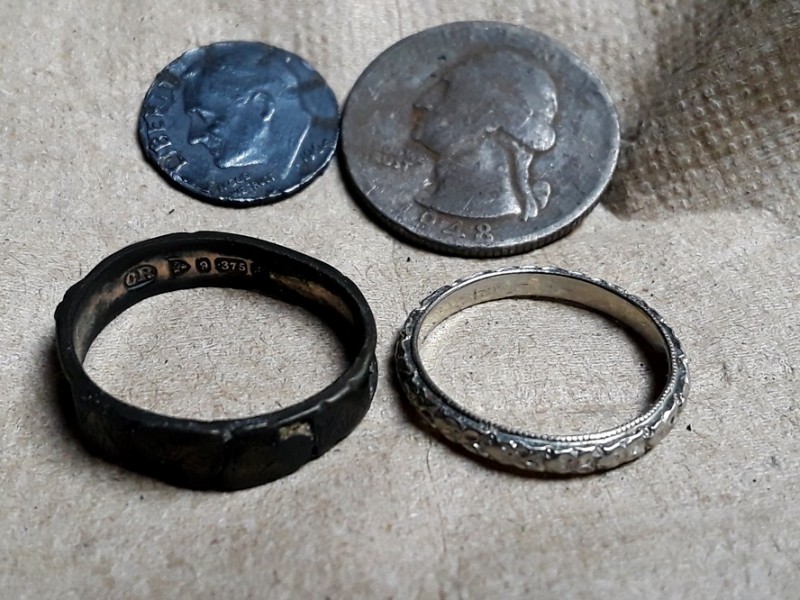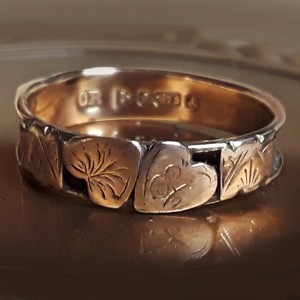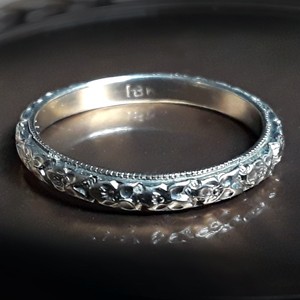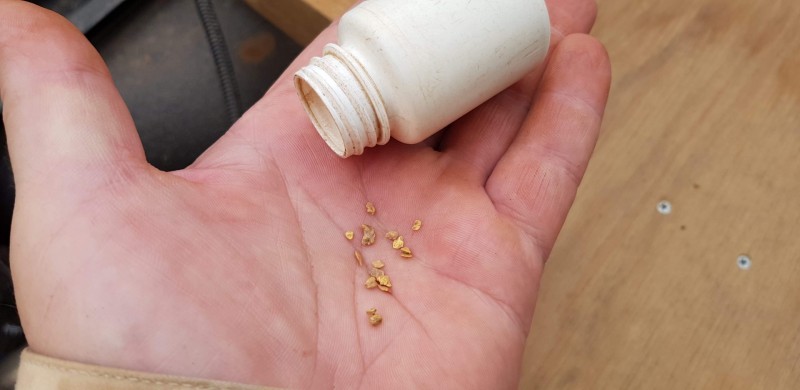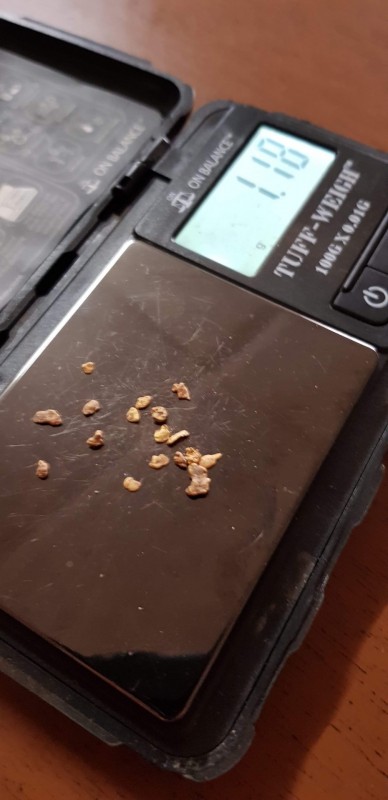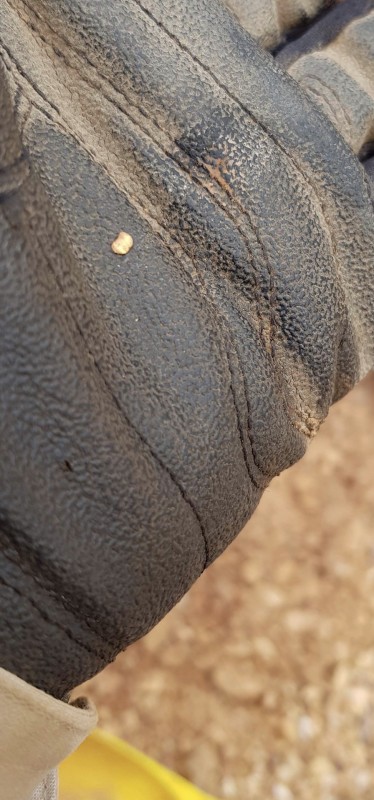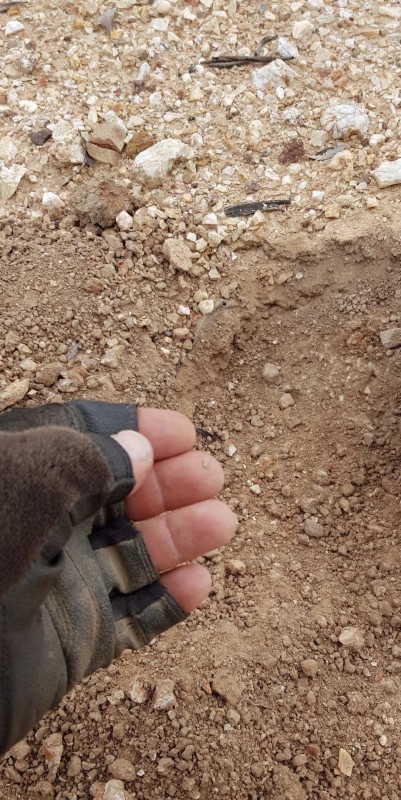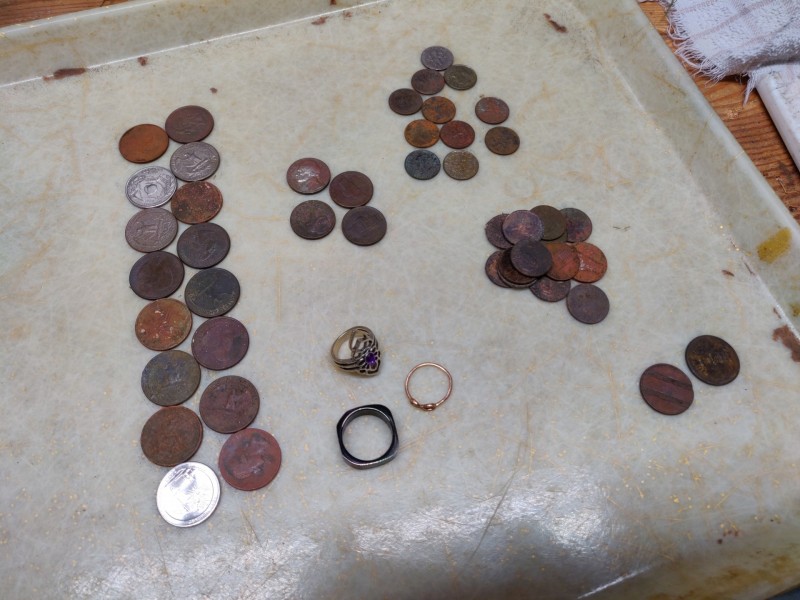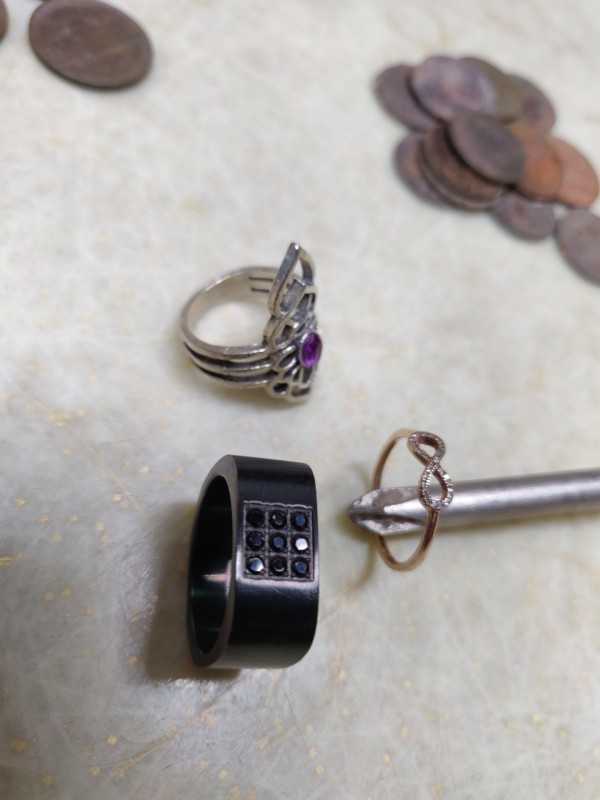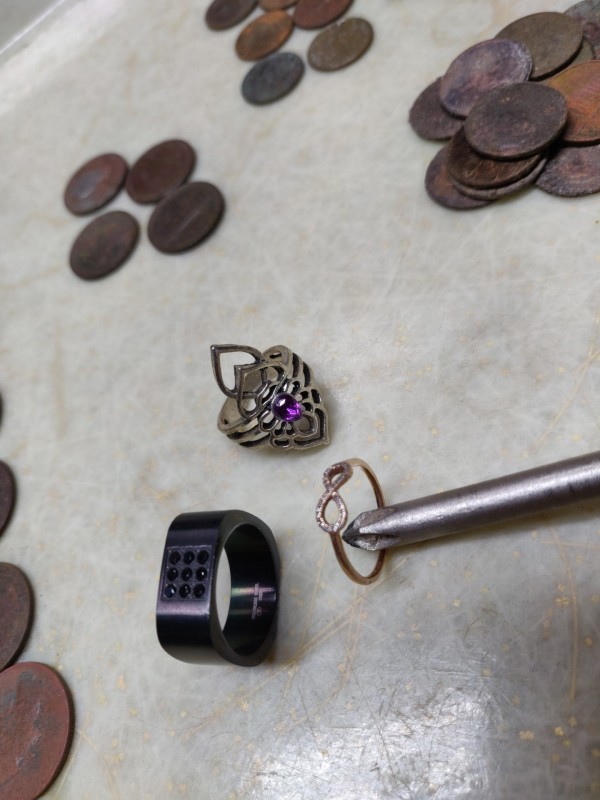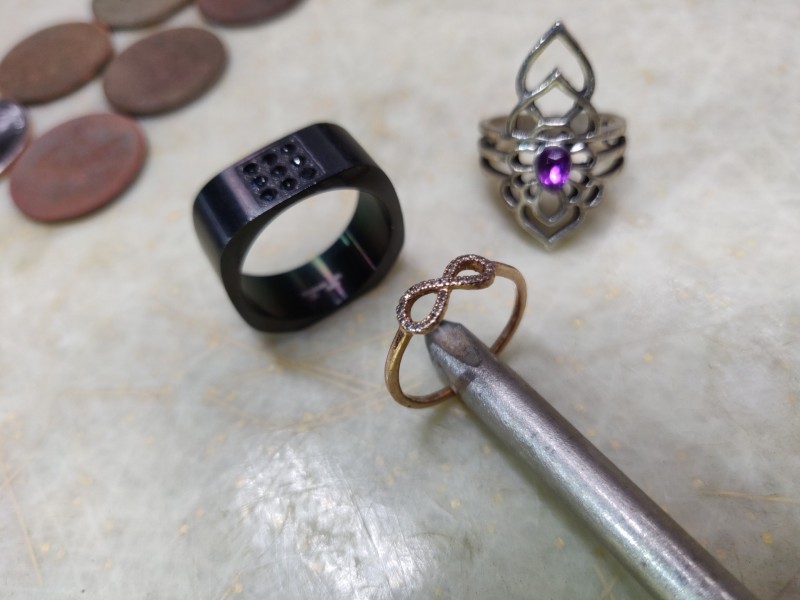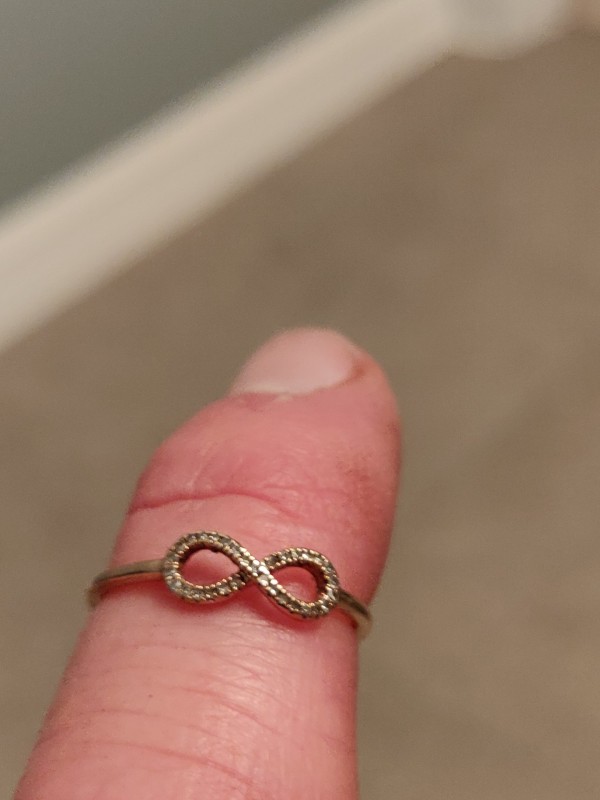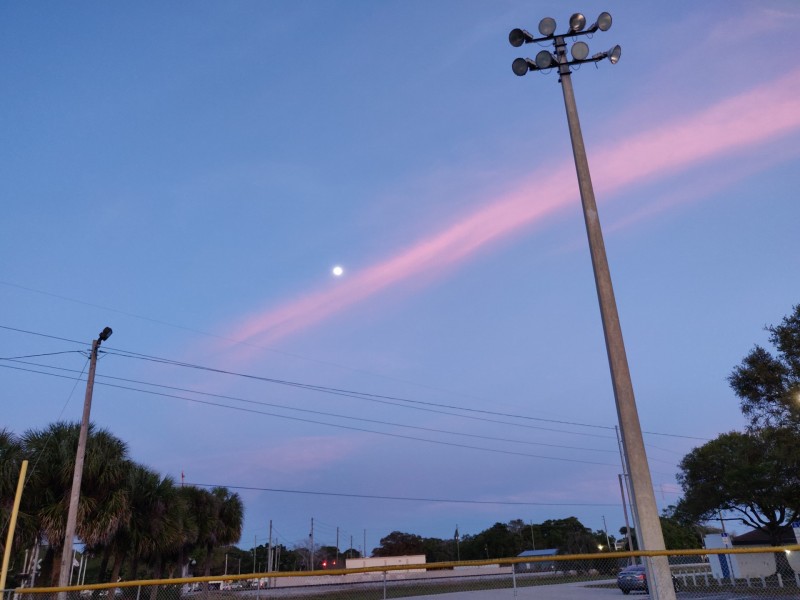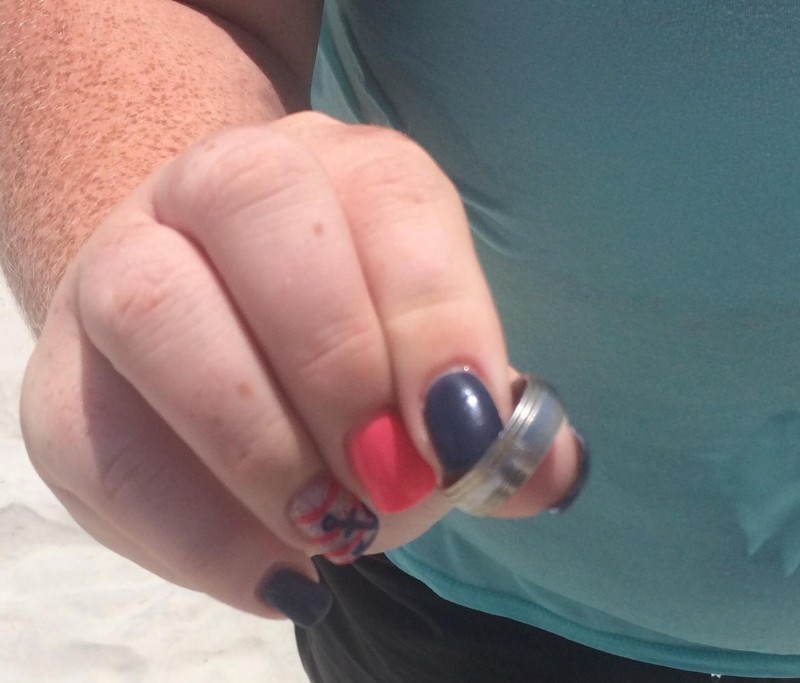Leaderboard
Popular Content
Showing content with the highest reputation on 03/18/2020 in all areas
-
Need a big PI to find high $$ gold? New customer on 1st voyage with his little VLF Gold Monster 1000 just dug some incredible, amazing, beautiful & highly collectible gold/quartz specimens. Largest quarts chunk is 27 grams Au. 2nd flat one 9 grams & 3 more rough pieces. Paid for GM1000 1st time out. I want most folks to realize, this isn't normal results, but with a geology background, it sure helps you read terrain & decide best ground to swing. Thanks bunches MH for allowing me to share your success.16 points
-
I recently returned from a MD’ing trip to Cancun and the 3 of us used Minelab Equinox detectors. Finds included 100’s of coins, probably 10+ pairs of sun glasses, with 1 of them being Ray-Bans, 2 cell phones, numerous ear rings with 1 of them being 14K gold and another was a diamond stud. Chains, bracelets and metals, some broken and others hole. Over 30+ rings with many sterling, a few of the modern Tungsten and Stainless wedding bands and even gold rings (both white and yellow gold). 2 rings really popped out that were both 14K gold. One was the blue sapphire with diamonds and the other a wedding ring with a nice 1+ karats of diamonds. Even the 1st time lady digger scored a nice 14K white gold wedding band with a couple cool sterling rings. I managed 21 of the 30 rings so I won't complain but the amount of gold was certainly off my standards. Pic of rings on my hand were the ones I found minus a sterling that broke when being tumbled. We all enjoyed the warm weather, water and experience. The Equinox detectors performed as hoped. Used Beach Mode #1, GB on, open screen by pushing the Horseshoe, SENS around 17 to 19 and Threshold so I can hear it. All other settings were FP. What amazes me is the gold to modern metal ratio. The resorts I hunt used to produce more gold than modern metals and now it has flipped. in years past, I'd come back with 15 or 20 gold rings on a weeks hunt and never a modern Stainless or Tungsten. Now it seems I'll get more of them than I actually do the gold ones? Well the wife still likes going down there so I might as well get used to it and realize 5, 6 and 7 Gold ring days are long gone at those places. Guess I'll jump into a lake and follow BeechNut around as his gold ring counts are still good.11 points
-
I put in some serious days of detecting old patches in Gold Basin in order to get a solid idea of what I personally missed with the Z14 and give my coils more of a workout. Most of the spots I hit were patches I personally found and I doubt anyone else has ever detected, that way I can gauge what exactly I was passing by and get a good feel for the differences between the coils I have with me. However, the first patch I hit was on in Lost Basin proper and not one of my own. I had once met an old timer detecting here as I was exploring back in 2014 and he explained he had found this patch in 2002 and it had produced up to a 1.5 oz'er and about 3-4 ounces in total, mostly deep. It's about 50'x50', seen 3 GPZ's I am aware of, 25" coils, and about 2 decades of detecting. I put on the 17x12, which I was given free by the manufacturer, and began a mental gridding. 12 t-hold, low smoothing, 19 gain, HY, Normal. About halfway through I got a very subtle signal, but it was repeatable. I kicked off low smoothing just to hear the difference and the signal was definitely bigger...maybe wider is a better term. Kicking into Difficult the signal disappeared. Back to my normal settings, I boot scraped an inch and saw the top of a large rock which I assumed was the signal, but after pulling it aside with my pick the signal got stronger. I ended up with a solid ~0.3 grammer at about 10 inches. I'm certain this target didn't make a peep on the Z14. You can see the big boss man overseeing the operation here to the upper left, and also the old dead twigs which the old timer had at one time raked aside, which was what drew my attention to the area to investigate at first. Grand Wash cliffs in the background, the Grand Canyon is directly behind them. Visible is the foreground is the filled in hole, you can see this is pretty typical Lost Basin reddish dirt. I would classify it as mild to low-medium "heat". Some run Difficult here, but I see no need for it. Here is a video of the lack of sensitivity at the tips of the 17x12. It's really noticable when trying to pinpoint and oddly it makes a big ole 17" round easier to pinpoint with for me than an elliptical. I feel as if the 17x12 is like detecting with a 14x8 except with a lot of extra plastic around the edges and with the depth in the center of the coil of a 17" elliptical. It's odd. I'm not sure it's my choice for rocky washes anymore because that sensitive area towards the center is hard to get over everything. Next I moved to a wash in Gold Basin which had produced a lot of sub-1 gram stuff for me in the past and I put on the 10" to do some crumbing. I slowed down and really made an effort to listen for tiny blips but after running through about 40 feet of wash bottom without a piece of gold I decided to grab my Gold Bug 2 and run back over the same ground because I swore I should have had some dinks by then. A lot of caliche is exposed here, and for those who don't know what caliche is, it's basically a limestone conglomerate type rock that acts as bedrock in the desert here. It can be soft or hard as concrete. Almost immedietely I had a strong signal on the side of the wash, which I assumed must be a small bit of tin. I grabbed the GPZ/10" and despite my best efforts I couldn't get any type of real signal to repeat for me. Going back to the GB2 I recovered the target and it ended up being a 0.03 gram tiny nugget, which upon looking with a loupe was quite porous and had tiny microscopic bits of quartz within it, a very common occurence for nuggets here as much of the gold forms within breccia in shears and shattered fault gouge here so it often encapsulates almost microscopic bits of quartz. Due to these non-sluggy sort of targets, the VLF seems to hit much harder on them than the GPZ/10", which probably explains why I can't seem to get the sensitivity on my tiny nuggets as others seem to be reporting, even in other parts of AZ. A 0.1 gram nugget of gold from here might only have 0.05 grams of gold in it, and discontinuous geometry, which is hard on non-VLF machines. I moved on another 5 feet and hit another pretty definite target on the GB2, this time it was a paper-thin flake, I think it was about 0.05 grams. Just holding it in my fingers lightly was enough to bend it. It's at the tip of my pointer finger. It would make a sound on the 10" if I waved it in my scoop right over the coil, but it couldn't hit it at about 1", just too thin even for the GPZ, and that's why I missed it I think. I put my GPZ back in the truck and decided to just run through the last 30 feet or so I had covered with the 10" just out of curiosity. I almost immedietely hit another signal, faint but repeatable. At about 6" I pulled out a 0.2 grammer right on caliche. Not sure how I missed this one, might have gone too fast with the 10". It ended up having a lot of quartz too, and some hematite. And then another 5 feet again, about 5" and sitting on caliche, a 0.2 grammer that I really should have heard before but somehow didn't. This one I got in-situ before brushing it away as it was wedged in between two cemented pebbles. And then finally a 0.15 grammer that really wasn't even very deep. Not sure why I missed this one but it was right in the center of the small wash and there is no chance my coil didn't scrub it. This post got kinda long, so I will take a queue from JW and do a multi-part post. My conclusion (unsurprisingly since we already knew this) is that the target geometry/composition makes a big difference in how successful a person is with the 10" and why I was having trouble understanding why people don't simply just go in with their VLF's instead of the 10X since it's so much quicker and lighter. I know I traded notes with Andy when we first got our 10"' X Coils and he was getting a lot better depth on tiny bits than I was, and I'm sure it's because the gold in the areas he detects is more solid and my gold has a ton more quartz inclusions and porosity. I have some 0.1gram bits that won't make a peep on the 10X even running them directly over the coil in my scoop, and that's due to the target characteristics. Overall, I'm reminded why I rarely spend much time doing this kind of detecting unless I really need to get a couple pieces for morale. I don't live close enough to gold fields where I can spend my time chasing small stuff like this. That's just me and my personal situation, but I feel it's necessary to state since the majority of posters here live much closer to detecting ground and might not understand why I detect the ways I do. It's 1000 miles drive each way for me to go detecting and I'm not retired so I have to make it pay or at least break even. Next post I'll show you what I normally aim for in my personal detecting and why I do it that way even though it breaks some of the "golden rules" of gold detecting. I believe it will be important to make these distinctions for those new people reading these sorts of posts 5, 10, 15 years down the road and wondering why we did what we did. I feel it's important to not copy what others do online, but to develop a strategy and skillset that matches your local conditions and personal situations. My style probably might not even be optimum 150 miles away in the Bradshaws, let alone across the country or world.10 points
-
Today was a bit of a late start as I had a few things that I’d been putting off for too long, the reward getting the job done was a few hours detecting which was fun. I wandered around a pretty large area this morning, going back over my “Sun baker” Patch and then working out from there. As I worked my way away from the main run I heard a channel flip confused signal that was subtle but present. So I pulled out the phone and captured the audio to share with others here. You will notice I’ve scraped some lines either side of the target to indicate the width of the response relative to coil motion, any narrower than this and these deeper targets become lost in the general busyness of the threshold because they are not being given a chance to develop properly. Pics of ground with mark lines before digging and after for comparison. The rest of the mornings gold found As always it was fun to be out and about and nice to be able to share my experiences with others. JP8 points
-
I have not done a thorough test on gold rings with the NOX yet, but have probably found 40 pieces of gold jewelry so far with one. In fact I just returned from a Cancun trip using the 800 and scooped 21 rings and many other misc items. I have 2 styles of detecting the VBall Court and each has their purpose. 1st is to find recently lost rings. Todays newer generation often wear stainless, sterling and tungsten more than gold. Those rings including open toe rings are all over the #'s, so I dig all easy to hear coin size nonferrous signals. Most of the gold rings will read 18 and below with the majority registering 6 to 14. 2nd hunt style is to find it all. (Micro Jewelry) Not only do I find the mentioned items above, but there are those shiny dingler thingie things that hang from the belly button. Thin gold chain ankle bracelets, diamond studs earrings and nose piercings are much smaller than a ring and 95% of the detectorists have no clue how to find them. Do yourself a favor and borrow some of the wife's diamond stud earrings and or thin chains. Check with your daughter (if appropriate age) to test some of her piercing pieces. Most gold diamond stud earrings I have testes read 1 and sometimes 2, which is the same on a thin gold ankle bracelet or chain. The dinglers are of different sizes and metals as well, so no near #'s, but from 3 to #14 on the ones I have found. 2nd hunt style modified for the NOX. Put the 800 in Prospect 1 Mode, do a ground balance and be sure to turn Tracking Off..Also open the screen with the horseshoe button and go...it will amaze you the capabilities of this sub $1000 detector. Other important aspects of fine jewelry or Micro hunting is Proper Coil Control. You lift the coil 1 or 2" off some of those targets and the signal is gone. So if it is 2 inches deep..you better be on your A game. Gridding is a must and be sure to sweep the coil in the sand to leave your trail on purpose. Overlapping will give the extra depth on some of the targets (depending on inside of coil windings) so I like to overlap about 1/3 of the coil length. Bring a super magnet and a nonmetal nugget scoop or nugget cup to help in speed of recovery. The magnet is to help rid of any small iron bits and also help ID some of the really cheap jewelry. After some time and practice, you'll start finding the backings of earrings and at that point, you are starting to get dialed in. Micro jewelry detecting is very hard and takes a lot of extra time and patience. In reality you are hunting for the treasures the other 95% of people miss. On a side note. If you have a VLF gold detector, a volleyball court is a fantastic place to start. Yes, small lead bird shot is a must to teach yourself the detector and its capabilities. #6 I feel is to big, but #7 1/2 or #8 is right and if you have #9 dove load in lead...cut one open and start listening.5 points
-
I saw this posted on an instagram account. Dwight has done promo stuff for NokMak so it shouldn’t be a hoax. Sent him a message as to a time frame and I will report back if he has any info unless Dilek has some info coming too. I had thought about getting one of the Pulse Dives for super hot summer snorkeling before but the option of a larger coil definitely adds to the appeal.3 points
-
I was in Quartzsite looking for flea markets for 2 days with my girlfriend (she is not a fan of prospecting). I snuck off for 2 hours to do some detecting with the 17x12 X Coil which Al had given to me for free to make up for the problems I had with the early X cords. I've not had any issue with cords since then, they stretched again but not enough to bind up in the shaft and inserting/removing coils has been easy now. Since time was slim I decided to hit a wash fairly close to town which had produced a little over 1 ounce for me with the 4500 and GMT, but which I had not visited with the GPZ at all yet. I figured it was the best chance for me to find a nugget in a short amount of time. Most of the gold found previously was 1/2 gram to 2 grams here. Not much smaller, and not much bigger. The wash has bedrock from surface to about 3 feet deep, a nice quiet gneiss and schist assemblage, pretty standard in Q. Part of the reason for the mild soils. I also thought odds were good that I'd missed all the deep, small stuff back in 2012 and that it'd be perfect to clean up with the GPZ/X combo. I'll try something different this time and I'm going to show the horizons and surrounding land. Anyone who really wants to track it down and find it, go for it. As I detect less and less, someone new or just starting can figure out where they are at. This is looking down towards some mountains that can be ID'ed. The part of the wash that produces gold is about 1/2 mile hike uphill from here, and is currently unclaimed. The 17x12 ran even quieter here than in Gold Basin, no problem running at 20 gain, HY, Normal. Though I run in low smoothing because I like a stabler threshold than most so I can move faster and concentrate. Within 5 minutes of hiking to my spot, I got a decent signal, a bit quiet but repeatable. Mostly only sounded off in a circular area under the coil, as if the coil were an 8" round, and I couldn't hear it towards the ends of the coil. I scraped 2 inches of gravel away with my boot, and the signal was now pretty stout. After breaking out the pick, I got down about 15" and started exposing jagged bedrock. I put the coil on edge and pinpointed the signal to a small area between bedrock juts and then began chiseling and brushing away gravel until I found the nugget with my pinpointer, so I could get a picture in situ. It's at the point of my finger inside a crack that required screwdriver excavation. I pried the nugget out of the crack after fidgeting with the bedrock a bit, and was a bit surprised to see it was larger than expected, in fact this is largest nugget I've found in this wash. I figured it was 3.5 grams by feel. It ended up running around 4.5 grams and paid for all our gas and food for the 2 day trip down. So I was happy, for what was at the time about 15 minutes total into the short time I had to detect on this trip. The hole is at the bottom of my coil. The nugget was wedged down in that bedrock which is unfortunately covered in shadows in this photo, and the total depth was just shy of the length of the coil, so around 16-17". There is a new ATV trail almost to the point where I started detecting so I can't help but feel at least 1 person has had a Z14 over this wash, but I'm not certain. This nugget was sitting almost vertical, and I suspect that is why it was missed previously and not a screaming signal on the 17x12, though the signal was definitely sharp and unmistakable. Another 30 minutes of poking and prodding into the rocks and bedrock, and I pulled up a deep drywasher nail and a the head of another nail. Both sharp and loud signals right in the gut of the wash that my 4500/GMT combo had missed 7 or 8 years ago. I was near the start of the wash, thus the end of my journey and thinking it was about time to turn around and hike back down. And then I hit my final target on the short hike, a ~1 grammer which was also a sharp and pronounced signal, and also right beneath a stretch of exposed bedrock. It's at the tip of my finger, didn't have to dig around with the screwdriver for this one. Here is the sum total of what I found with about 1 hour of detecting and 1 hour of hiking there and back. This is a wash I detected back in 2012'ish with a range of 4500 coils and my GMT (before I had a GB2), probably 8 or 9 times total. I covered most of the upper portion of the wash that had produced nuggets for me in the past, though I suspect I could pull another 1 or 2 out of there if I tried with the 10". I'm also pretty certain the 10" would have missed the larger, deep nugget, but I can't be absolutely certain. Total weight, not bad for an ~hour of work. And one final horizon shot right where the nugget zone starts, up towards the base of the mountain. For all the internet sleuths and greenhorns who can't find anyone to share locations with them to get them started. Good luck. Enough clues here to find the area for a dedicated individual. Overall I was happy with the 17x12 in the rocky wash/bedrock areas. It ran smoother here than Gold Basin, both dealing with ground mineralization and EMI. GB gives me these zips and zaps that are absent here, and struggles with the BIF and basalt, and it's real hard to run this 17x12 full bore in washes there with high black sand concentrations. The magnetite chunks in Q gave me problems but they do with the Z14 and 4500 too, so nothing new there. The main issue I have is the edges seem to not be sensitive enough on this coil compared to the rounds. So while the geometry allows you to push into tight cracks, you aren't always getting full sensitivity in the depths of the cracks as you would with the 10" round. The shape of the area of maximum sensitivity within the coil is odd. A simple sweep often misses subtle targets unless you are over one of the sweet spots, and the sweet spot doesn't appear to just be a smaller ellipse within the elliptical coil, it's some odd shape with hotspots within itself. That sounds confusing, but I have a hard time explaining it better. I think Condor mentioned it already, but pushing/pumping the coil into tight spots over the center of the coil (if possible) often works better to hear the coupling between very tiny or very weak targets to determine if it's good repeatable or ground mineralization. I've been doing this out in the open in the flats in GB too, especially in areas of high mineralization, to determine what is a good target. One thing is certain, in the US it's mostly about knowing where to go, or knowing someone who knows where to go. Or having exclusive access to land. This shows why. This was found in 2 hours, but only because I was lucky enough to start detecting at a time when a lot of people ran their detectors subpar by copying settings off internet forums, allowing me to find a lot of stuff the others missed. Those days are largely gone since the GPZ levels the playing field today. I couldn't walk into a goldfield I've never been to an expect the same results, it was only my knowledge of what and where I found gold in the past that let me do this. So, don't get discouraged if your results are not the same. A new guy would simply just have to hope to stumble on this place by dumb luck since all the leads are gone now, while I can just hike right to it. So maybe this will help someone new find an "old" place. I don't detect as much as I used to these days as I have other projects going, but Al (X manufacturer) sent me this coil for free to try last year, and I figured it'd be nice to do a write up since I wasn't able to run my GPZ on the commercial project I have going due to EMI interference from the CAT 336. The coil performed great here though, and it was nice to just get out and finally do some detecting for fun.3 points
-
My good friend RJ was scouting an area to detect and his eye catches something not so normal. Very cool video and heck of a history save.3 points
-
Hi Gerry, I never touch my threshold relative to Audio Smoothing, 27 on the GPZ compliments Audio Smoothing OFF perfectly. However what I do adjust a LOT is the Volume on my Booster. Sound pollution is a real problem when detecting whether you use speakers or headphones so you NEED to be able to hear and be connected with your threshold at ALL times. The balancing point is trying to elevate the Threshold Volume (different to Threshold level) so that slight variations stand out without causing distortion or worse without making the Threshold TOO dominant and then killing sensitivity to pitch change variation. It’s a complicated thing to get right and of course we are all different in the way we listen. Threshold too low causes the audio to surge killing sensitivity through the volume variations (a little like the Audio Smoothing filter), too high and the threshold loudness kills sensitivity by becoming too dominant relative to pitch/volume changes. Lately I’ve been experimenting with the Volume control on the Detect page to introduce a bit more thump without blowing overall stability and smoothness, but you have to be careful because each change above 8 is like increasing the Sensitivity by two. In my case I rarely go above 10 unless the wind is howling and I have no choice but to increase or quit. The Volume Control on the Detect page is very coarse between numbers so you have to be careful to not overdo it, you also have to realise that when you get USED to a high volume it takes a long time for your ears to re-adjust back to lower volumes again, this then has the effect of making you feel you are deaf and might be missing gold. IMHO temperature has more to do with personal comfort than it affecting the actual ground itself (this is different to moisture and moisture layers BTW, a whole different subject), however the earth does go through stages during the day night cycle that waxes and wains the natural sounds, night time is much quieter because usually the wind dies down, and all the critters go to bed. It is also usually more comfortable temperature wise so an operator in warm climes will feel less heat stressed (most detecting is done in Desert country after all). Also as the earth rotates from Night to day there is a natural warming of the planet from Dawn on which heats up the atmosphere above causing natural instability in air, so Sferic noise and general EMI will increase and combine with the general noise thats associated with a planet that is coming to life again after the dark. I experience this most days getting up before dawn when it is calm and quiet hearing the gradual sounds of life gathering momentum. IMHO adjust your threshold at the quietest part of the day then use your volume controls to maintain your ability to hear it as the noise levels of the environment increase or decrease. There is some evidence that Sferic noise increases just as the sun sets then goes quiet but TBH most of it is linked with personal comfort based around ambient temperature relative to your core body temperature and overall atmospheric instability. IN the case of the GPZ thanks to its amazing electronics and our ability to now tap right into the VERY noise floor of the machine you are able to listen to the variability of the magnetic materials associated with a weathered deposit. I can actually hear the chattering in the threshold (described recently as “bitching” ), the detector sounds slightly unsettled and annoying to an untrained ear, this noise is not linked with general localised mineralisation chatter but ground noise can mask it to some extent so is not noticed so much in most areas. When you are right on top of a gold shedding location this magnetic chatter will be at its strongest and can be quite distracting, as you work away from the zone the chatter will become diluted as the weathered materials of rock types that contact with the gold mineralisation zone blend in with the magnetic shed material, in some tight spots there will be concentrations of this material that can sound noisy but these are slightly different to the gold shed zone, this magnetic response is very much different to saturation noise but is associated as well. I use this method of listening to the noise floor chatter as a prospecting tool in remote green fields locations, I have often found gold because I hung around an area and walked it more thoroughly even though they ground did not look promising. This effect can be very subtle and is once again a BIG reason why I use conservative settings with specific Volumes so I do not drown out or kill off this vital variability. In a know patch of ground it can become annoying but in unknown ground it is a VERY BIG clue to the potential of gold being present. JP3 points
-
So, last night was not four in a row night for gold. You can't win them all. Nevertheless, I detected a different spot on the football field. I have found the blue-tipped bullets before, but they were really the hot ticket last night. They came in a tight 16-17, so they are a must-dig. Same settings as my other posts. The 15" coil is able to get the small stuff as shown in one of the picks. There is part of a "Diamond" stud earring that sang to me as a solid 8-9. Crazy that it was able to pick that up as I'm swinging away at a recovery speed 7 to cover a lot of ground before the lights go off on the field. Not much for change, only a little over $3. Lots of nickels, however.3 points
-
Yes. The reason I call it Prospecting Mode and not Gold Mode.... I've sold over 200 NOX units across the US and many folks wanted the 800 model so they can hunt GOLD RINGS. , but there is no raw natural gold in their region. The NOX 600 does not have the Gold Mode and so they felt the 600 will not find rings. So wrong they are, as a gold ring is just as easy to detect with both models. So with many folks not realizing it, I call the Gold Mode what it is meant to be...a Prospecting Mode. Here are some NOX 600 gold jewelry finds as it does just as well for ring hunters as the 800. Part of why I get so many referrals on detector sales, is I try to get the customer what I feel is the best bang for the buck detector. When comparing the 600 to the 800 and you live back East with no natural gold, why pay $250 more for wireless headphones? Yes I realize there are some advanced fine tuning and I know most folks never go there...let along even know how to get there in the detector. Minelab did a stunner job of making great adjustments and settings for the Factory Preset Modes which will suite the majority of users.3 points
-
3 points
-
I often get asked what Saturation signal actually is, here is a video of a coil saturating badly on mineralised ground. With good coil control you can work places like this but it takes a lot of effort. JP3 points
-
Thanks for the serious response, Gerry. I didn't even know enough to state my goals, so thanks for bringing that up. (But I do now feel justified in creating the thread in the first place. At least for me these things aren't obvious.) I figured jewelry was where I'd get the most chances for a good find, but didn't realize small jewelry (e.g. diamond stud) vs. large jewelry (e.g. rings) meant different settings. Given the age of the pit there might even be some deep items although unlike coins, recent drops are likely to be almost as good as ancient ones. To answer your question, I'm going to put my emphasis on gold jewelry (especially rings). Now that I've clarified that, any further suggestions? (I will be using the Eqx 800.)3 points
-
What is your goal of the hunt, a ring and coins or diamond stud? When I hunt for rings and charms from broken necklace, I dig all foil readings and up. If I have time and want to impress folks, then take a VLF gold detector and dig all nonferrous signals and especially the ones that have the signal width of a #9 lead birdshot. None of these were real diamonds this time, but I have found them. Keep us posted of your hunt.3 points
-
I’m not sure what you mean by no threshold, in your example are you lowering the volume till you only hear the louder responses? I listen to the audio as a whole which is mainly threshold with natural variations dependant on localised variability then within that information I am specifically listening for a smooth lead in and tail out response that is repeatable, the High/How ones are more obvious but the Low/High are the pay day ones. The key is a broad change in pitch response that peaks above threshold volume then tails out back to threshold pitch and volume. In both audio samples you can hear that quite clearly with Sample B being the MUCH more obvious response thanks to the better coil. Both samples have a degree of channel flipping going on, a sure sign of a piece of gold being present in natural terrain. Threshold and Threshold pitch are VERY important, 27 on the GPZ compliments the Audio Smoothing OFF mode, all my other settings defer to that. Threshold is your reference point and should be heard at all times, this is why I use conservative settings so that the “Bitchin” signals do not dominate the scene destroying my ability to pick the subtle repeatable wide pitch change variations. More is quite often less, in most cases setting the detector up to BANG in on a target that would have been obvious anyway can go against you. So IMHO the key is having the Threshold able to be heard clearly above all things, it is the PITCH change in the threshold that you are most sensitive to, magnifying all the little dross variations in the threshold will only cause fatigue and frustration. Getting the range of physical MOTION right in relation to a suspect target by training your ear to listen through the natural threshold variations for the repeatable smooth target signals is the key. Do NOT overthink this, I am quite prepared to miss a piece of gold, I’ll get it next time. Instead be loose and relaxed and let yourself become one with the three input’s, eyes, ears and hands. If something sounds different approach it from different angles, move away from the target, its not going anywhere,😜 and allow your machine to average out the local conditions whilst at the same time allow your hearing to average out the “Bitchin” for the localised area as well then come in at the zone again. Visualise the ground where the signal is and play with the coil speed and height, does the signal hold in if the coil is lifted. Reset the GB by pumping the coil nearby (using Semi-Auto Mode but no Quick-Trak) then swing the coil left and right away from the target to average the GB again then come in over the target again referencing what you last heard. With practice this all becomes second nature. JP3 points
-
I tend to agree with Jason on the 17x12 X-Coil, I've come to some similar conclusions about the tip sensitivity. As I mentioned awhile back, I felt I was losing targets with a side to side sweep and had better success pushing the front section between the windings at suspected target signals. The hottest section seemed to be a full 2 inches off the edge directly between the windings. If that's the case and you're losing 2 inches off the front and 2 inches off the back, you're not pushing at 17" long coil. I've found some tiny gold with the 17" round, but it tends to be much more dense and lack the porosity that Jason is experiencing with his Gold Bug. I'm headed to the desert for some social distancing and detecting tomorrow so I'll give that 17" round a good workout. Hopefully, I can get over some deep targets and make a few recordings for the shut-ins. Tally Ho2 points
-
Is there a can line there? One of the first things I check for is can line and how old is the clad. Can line indicates the grounds had been re-done, often first 6" or so scraped away and new loam or sod rolled in. I also do a dig all in a few areas to find the cruddiest coins which are the ones that had been there the longest and find the newest of the bunch. This gives me an idea of about when. One of the local parks here has several ball fields. The oldest had been removed and replaced with another about 200 yards away. Found some IH's where the old one was. Other ones are constantly being re-done except one that somehow had an 1877 seated sitting about 2" down in the hard pack. There is a soccer field at one of the local schools that no one has seemed to have hit, Clad there is mid 70's, trash and can line 6-8" down. It used to be an old old farm at one time so with some slow searching I may find some deep coins but I can't do a dig all there as I could get tossed out. I try to leave no traces when hitting parks. The Volley Ball court might have some old sand there or it could have been done over many times. Doesn't sound like a huge area so dig all non iron might be the best choice. Curious if there is a trash line.2 points
-
Thanks Gold Catcher, been away for a while without the computer. I dont mind digging up.01 Gram pieces all day. Stuffed at the end of the day but a smile on the dial all the way back to camp, cheers sturt2 points
-
Today I spent 7 hours of detecting with smoothing off, threshold at 24, bumped my gain back to 16 and slowed down to a glacial crawl and scraped or dug every single subtle, semi-repeatable tiny warble in the threshold I could pick up in 2 patches which I had just run the 17x12" and 17" round over. I started thinking all those barely there signals I got tired of messing with previously might have been nuggets after reading JP's thread so it was worth a go with brighter, non processed audio, to see what I missed. I've flogged these spots with the Z14 at least 6-8 times each too, plus a GB2. Originally ran with a thold of 12 and low smoothing on the Z14, as it was my go-to for Gold Basin. I knew there were some iffy signals to investigate. I got about 30 or 40 hotrocks (mostly BIF and magnetite clusters buried 3"+ deep), a lot of small lenses of hot ground and black sand concentrations, a lot of disappearing signals, and I found one 0.17 grammer with quartz in it. That nugget was not audible in the ground on Difficult and I would have missed it if I tried tamping down the hotrock response by moving out of Normal, it sounded just like a barely audible buried BIF chunk. One thing I still know for certain is that kind of detecting still isn't for me. I know it's next level to find the almost non-existant signals and turn them into gold, and I know I could if I wanted to spend the time doing it. But, I believe I can get 95% of the gold in 10% of the time running low smoothing, 8-12 threshold, 18-20 gain, HY, Normal, out here generally and that lets me enjoy the time outdoors more, just my personal preference. The Z really does make signals pop and if you are on the gold and running hot settings, it's going to tell you without much effort or scrutiny required, the X Coils really do seem to sharpen up the responses even more on top of that too. A 10" or 17" X with low smoothing will hit stuff a Z14 with no smoothing can't hear even faintly. No equivocation. I am liking the 17x12 less and less and the 17" spiral round more and more. The 17x12 has a real problem with desensitivity at the ends, to the point that the 17" round is actually easier for me to pinpoint with and covers a ton more ground at greater sensitivity, paradoxically. The form factor of the 17x12 is greatly preferable, but I don't feel as if it's a lot of use when the coil isn't very hot at the ends. Maybe it's just my coil, dunno. I'll post a video tomorrow or sometime to show what I mean. One thing - I cannot for the life of me run in Semi Auto with these X Coils out here, only full Auto. Otherwise I'm digging hot rocks every 2-5 feet. This is ground that I wouldn't call it exactly normal to dig more than 4 or 5 hotrocks a day in detecting normally. Ground is quiet though and it will balance fine. Another observation - I haven't had a single "zed warble" target with the X Coils yet, not even trash, which is just an oddity and not a bug. Might just be my targets.2 points
-
Yesterday's gold ring was found on the second dig of the day. Today's was literally the first dig of the day. It was in the grassy area where people sit and eat concession food by the fields I hunt around home. It was a 10-11 on the display, and I was using the same settings as yesterday. It is 14K.2 points
-
That's some serious info Gerry, I never considered testing a #9 shot, But I will tomorrow. I'm wondering what I passed up at couple of parks. Man that's a great idea!!!2 points
-
This is a video I’ve done to demonstrate the correct height you need to swing the coil over the ferrite when performing a ferrite balance. Looking from above it is very deceptive of the actual height the coil is in relation to the ferrite. The key is to get the coil in close but not scrape or rub the Ferrite. Some residual signal is OK but a large noise isn’t especially in high X ground. Settings: Gold Mode: High Yield Ground Type Mode: Difficult Sensitivity: 9 Audio Smoothing: OFF Threshold: 27 Ground Balance: Semi Auto Quick-Trak: held in when swinging over Ferrite Volume: 10 (was using the WM12 speaker for filming) Threshold Pitch: 402 points
-
Here’s some comparison audio of a typical initial gold signal response compared to when some soil has been removed, the second I hit this target I knew it was gold, it had a mellowness to it. The GPZ is not a sharp machine (which I love), so requires input from the operator to get target signals to stand out from the threshold. To my ear this one was an obvious signal that yelled gold right from the start, it was well rounded, had a decent amount of range of motion required to manifest properly and it sounded buried. If I get a subtle repeatable signal and it doesn’t improve a lot when surface clutter is removed I start to get excited, if it survives the next soil removal phase and still remains subtle then the excitement doubles. Buried is the key, in undisturbed ground if its buried the chances are like 80% of it being a good signal, on the surface in trashy areas its anyone’s guess. JP Note initially the signal has a slight bit of channel switching going on, a sure sign its gold. Nugget that was making the signal, finished up at about 5 inches2 points
-
I wish I hadn't heard that. Its very depressing. The V3 release was historic. It was "World Fair" class. The vibrant display, the ability to see multi-frequency results simultaneously, the ability to discriminate by correlating across frequencies. The ability to completely customize MY metal detector. It was like the future was now and was only going to get better. I thought, "Now we will see more color displays!" I thought, "Now we will see more frequency based discrimination!". I thought, "Now we will see Density!" Only we didn't get any of that. The V3/V3i was a far as it got. The rest of the mfg's politely stayed in their lanes. The new guys politely copied what was already out there. And the users base stayed predictably dumb. My hope is that someone at Whites keeps the vision alive. I'm going to put everything else on hold and start raising the money needed to go buy a brand new V3i before they go extinct. HH Mike2 points
-
Hi, I live in a suburban area with tons of EMI and moderate to highly mineralized dirt. I often hunt in basic Park 1 and Field 1 when I am coin and jewelry hunting. I rarely am able to hunt with the default sensitivity setting of even 20 however. I have found that lowering sensitivity helps both of the issues you have mentioned, especially EMI. You can auto noise cancel all day but most EMI is not going to be solved by auto noise cancelling since most EMI consists of multiple frequencies. When the source is just one frequency it is easier to deal with by auto noise cancelling and by hunting in a single frequency. Coil bump is just a fact of life with ALL very high gain detectors. The Equinox 600 has a high level of transmit power. Auto ground balancing so there is little to no coil response when the coil nears target free ground in pinpoint mode, turning down the sensitivity below 18 or until the coil bump stops and keeping the coil as level as possible throughout your swings are all ways to alleviate coil bump. If you continue to get actual numerical target ID numbers when you gently bump the coil after doing all of this you might want to check both of your coils and see if one has more coil bump responses than the other coil at basically the same settings. Jeff2 points
-
OK time to throw a cat amongst the pigeons, the next audio grab is of the same in-situ target only difference being the coil, settings were exactly the same. 😇 I’m not going to discuss the finer details just let people listen to the differences between an iffy target signal and a more obvious response when things come into alignment. You will also notice a lot of channel switching blending going on in this clip, this is a sure sign of a nugget in undisturbed ground. The lead in and tail out is really obvious in the audio. I’ve also include the first clip in the post so people can go to and fro without having to wander all over forum. JP2 points
-
2 points
-
Flak, I’ll try to set a good example and avoid replying to the jibes. I am not an innocent in the proceedings and do bite well on the subtle baits that get dangled, floating out a few hypocritical taunts of my own at times.🤥 I feel that some of my comments in the past have pushed the boundaries into what has become a decaying line of unacceptable behaviour, something I need to learn to control when interacting with others. For my part I hope those who have felt offended take this as a peace offering for the sake of everyone else who has had to bare witness. A balance needs to be found where the forum is entertaining and interesting enough to encourage sensible debate without it getting into the tit-for-tat territory. I do love a good debate and putting forward differing views especially on subjects I am passionate about, trying to word things were it challenges POV’s without bruising egos is the hard bit. Hopefully when others post they too will feel compelled to tone things down and avoid being tempted to write in such a way that others are triggered into the same old familiar spaces. We’ve all become very adept at recognising each other’s sensitive points and then cleverly camouflaging them in our words. JP2 points
-
Finally made it to an old park I figured was hunted out. As usual, there is no such thing. This park has a sandy volleyball court which aerial photos indicated is over 50 years old. Other than the (wooden, yay!) posts that the net is attached to there are no impediments. Any advice on approach (e.g. coil choice, ground balance tricks, target depths to expect, target tones, TID's to accentuate/ignore) would be appreciated.1 point
-
Yesterday was an overcast day which meant lower temperatures, the perfect opportunity to focus on a little spot I have that has very little shade cover. This year has been a weird summer, I have never seen the humidity so high without major rain associated with it, so even with the milder temperatures I was in a lather of sweat just wandering around. Fortunately the gold I was chasing is tiny and shallow so no major effort digging deep holes and getting the heart rate too high which then means elevated body temperatures. I’ve done a lot of testing at this location thanks to the low mineralisation levels a perfect spot for VLF or MF machines. However as is typical in Australia even our quiet ground locations have their noisy sections so yesterday was aimed at targeting the salty ground and the hot rock sections. It’s was good fun getting 17 bits but the pay was pretty ordinary relative to the sweaty time spent!😜 The bigger bits were surprisingly deep with a nice crisp but quiet signal response, the tiny ones were oft times right on the surface which required a bit of prostrate kneeling to get down low enough for my 53 year old eyes to spot them before disturbing the ground running the risk of losing them. JP1 point
-
The reason you are having to use Auto over Semi-Auto is the rocks are high in X signal, because the coil does not balance X signal properly you have to rely on the combination of G and X balance tracking associated with the Auto mode. Just as a suggestion if you decide to go down this path again, try running your threshold on 27, Audio Smoothing OFF, Volume 8 and lower, Sensitivity on 9 and let the detector do the work. I feel the way you had the detector set up your enhancing natural variation into the target space which is very fatiguing especially in High Yield Normal. In essence your usual settings were using Smoothing as a filter to control the increased audio response that higher sensitivity levels create, lowering the threshold below 27 is tending to suggest you are using it as a volume control measure because it sounds too dominant at higher levels, problem is the threshold gets very stop start below 27 surging constantly. Instead when using the settings I’m suggesting keep lowering the Detect page Volume to control intrusive non-even responses when using the lower sensitivity and higher threshold of 27. High Yield Normal has oodles of sensitivity even with sensitivity set to 9. Do not be afraid to lower the Volume right down to 4 or 5. JP1 point
-
It's true not worth shooting..... But in case you decide to .....please don't miss because it will be another piece of lead to detect ......1 point
-
The quality of posts on this forum has skyrocketed lately, great read Jasong.😎 I agree about the elliptical, its best for more open areas where coverage is paramount compared to tighter spots. JP1 point
-
GB, I am so fortune to have the job I do. Over 25 yrs ago I started selling metal detectors and as the industry has shifted from small Ma/Pa shops to Mail Order, Big K warehouses and Amazon, I realized the need for personal touch and trying to build a relationship with my customer. Since I use, sell, test and compare so many brands and models...and travel all over the place for many styles of detecting, it gives me knowledge most of the mentioned sites do not have. Plus, it is me who actually answers the phone each day and me who emails answers to the questions I get all the time. Yes it's time consuming, but at least I know I tried to offer more detector knowledge than the average dealer. If my customer is Successful with the detector they purchased from me, then I usually have a customer for life and they are willing to refer folks my way. By no means am I saying I'm the best know it all dealer and I would never say that. But not many dealers went on 15+ individual week long hunts to 7 states and 4 different countries in the last year. After all, I get to swing, use, and talk detectors for a living and I also realize some of my input will help others in the hobby I so much love. In reality, how many people know what the average diamond stud earring sounds like or reads on the NOX? I do, and I also know what pin pointer works best when trying to find that tiny gold and glitter in a grass soccer field.1 point
-
JP, If I may... Do you feel the urge to turn your threshold up (just a little) even higher in the later afternoon or on really windy days? I do and it seems to help as I am always splitting hairs trying to keep the threshold smooth enough to hear those faint ones. I have also found sites that the detector runs even more smooth when I night hunt. My experience in summer is.. As the soil heats up from the rays of the sun, the ground seems to come more alive with unwanted sounds and my threshold will not be as smooth. I seem to do best, when 1st hunting in morning and then late hunt just as the sun goes down. Plus the night hunts were always good, but I did not know there were literally hundreds of scorpions out at night at Rye Patch. For most certain at night your ears become even better tunes for slight change as the brain adjusts your senses and capabilities. Thanks in advance.1 point
-
It would be the same as any other sandy area. The higher the frequency, the more particles of trash you will also find. Sometimes the net poles and the border around the sand are made of metal or have metal in them, so be ready for some false signaling when you get close.1 point
-
Being fast with such repairs is key.. we keep our fingers crossed 🙂 I've precautionary snagged a ZZSY BT80 for 13€ including shipping. It should arrive today. Hopefully it pairs with low latency 😁1 point
-
Interesting videos. Seemed like pretty fair and reasonable comparisons. I would have liked to see the other two frequencies (6.4 and 12) tried on the MDT 8000. Variations in sweep speed and angle would also be nice. I'm sure some additional settings for the Nox would have also been interesting. Nox experts can suggest some, certainly. But that's the nature of test videos -- we all see other settings and techniques we'd like added. Glad to see these posted. Hope to see more!1 point
-
I’ve asked Steve to put the Audio/Visual material into this new thread and will address questions etc related to that subject here. I have a heap of material lined up as well as some ideas for future projects. I intend to use concepts and material gathering during detecting sessions like this as a form of maintaining good mental health over the coming weeks so watch this space. If people are a little shy to ask directly on the forum your welcome to PM and I will answer in the thread if it is necessary. But please the threads are all about dialogue and involvement, I won’t always answer every question directly so some posts will just be left as comments but it’s still good to see peoples thought processes and ideas. Just remember though posts need to be about the subject at hand, if you want to share more detailed information then its very easy to start a thread of your own. JP1 point
-
For me, it seems like the rings produce a "hard, repeatable hit" vs. a "wimpy, choppy hit." The variability is key for my ears. Little to no variability means to dig, and not just these lower numbers.1 point
-
2 inches or so. There is a lot of other aluminum junk that falls into those numbers (9, 10, 11), but the way the ID locks onto a ring is a tipoff once you have dug enough of those numbers. In fact, if the ID numbers stay within a range of 2 numbers as you swing, make sure to dig it. If it bounces through 3 or more numbers, it will likely be junk. A 9 is not common, a 10 is often the flat piece of aluminum that gets pushed down when a can is opened, and an 11 is not common. All those numbers can be aluminum shards of some sort. Start digging those numbers if you want the smaller women's rings...the ones with diamonds.1 point
-
Why waste a perfectly good .38 in that manner. Just dig a nice hole, make sure there is no gold in it, throw in the claim jumper and fill in the hole. I just don't understand why you would of wanted to lose a gun like that. Don't forget to plant a nice little tree over the hole and protect the environment.1 point
-
Was out this afternoon on this "chilly" Florida day (65°) for 2 1/2 hours to a soccer field with the 15" coil. I was running park one. My second signal of the day was a strong 11 and was golden in color. It was basically on the surface of the sandy soil. I thought it was junk, but it went in the "special" zippered section of the Garrett finds pouch. I moved on and hit another two rings in an overgrown volleyball court right next to the field and a little over $5 in change. The black ring is stainless, the silver looking one is junk, and the gold one is 10K. It was very hard to see the markings even with an inverted pair of binoculars when I got home. It has been a long time since I made it out, but this helped make up for it. It was fun to get out.1 point
-
Agreed Steve, well written and factual with some excellent pictures. The country looks so similar to the Pilbara in WA without the red of course but still strikingly beautiful, although it must get extremely hot during summer! Jasong if its OK to discuss this subject? Audio Smoothing is a noise floor filter that raises and lowers the target signal acceptance, the problem with it is once raised anything that does not reach the acceptable level of signal strength to break through the filter will never be heard no matter how much other settings are tweaked. Might I suggest as an experiment to open up the filter by using Audio Smoothing OFF then lower the Sensitivity till the threshold sounds OK to your ears relative to the ground signal, you can also in conjunction with this adjust the first page bottom right Volume control to get the balance right so there is an acceptable amount of feedback from the unit in your quiet ground types. On the very edge of detection targets, adding Smoothing really does kill the outright depth and I have found that testing on in-situ known targets gives a false impression of what is actually going on because the general wandering around listening to the threshold without any knowledge of a target is not taken fully into consideration with this testing method. Familiarising yourself with the localised ground conditions plays a huge role in depth detection as your brain does a lot of averaging and is primed for that slight break or pitch change. IMHO increasing sensitivity then having to use filtering is counterintuitive, filtering kills the lead in and tail out information reducing the effectiveness of using a full Range of Motion on the deeper iffy targets. Not trying to tell anyone how to suck eggs just suggesting a different approach, I hope its OK to mention this without seeming contentious?😬 JP1 point
-
While detecting several hundred yards south of the Daytona Beach Pier, an elderly gentleman approached me to tell me about a lost ring that was “flung” from the patio deck of their hotel and asked if I might be able to find it. He said they looked for it several times without any luck. I asked him several questions such as how long ago this happened and in what general area did he think the ring landed. He told me he could show me the area and where they thought it landed after being tossed off the hotel deck. As we walked over to the area below the patio he told me how all this happened. It seems his grandson threw something off the patio onto the beach and the ring went with whatever it was he “flung” [the grandfather's word]. When we arrived at the area below the patio, the gentleman described where they were standing on the deck and about how hard his grandson “flung” whatever it was. I laid out a general search area based on what the grandfather described. Fortunately it was in dry sand not more than 15 feet from an elevated patio overlooking the beach. I began to grid search the area and within several minutes the distinct tone of gold rang out. I pushed my scoop into about 4-5 inches of dry sand and out popped a ring. Not showing what I'd found, I asked him to describe the lost ring. He said it was white gold but that's all he knew. He would have to ask his grandson's wife for a more specific description. I told him to please ask her to come see me. A few minutes later a young lady approached me and identified herself as the wife of the man who lost his ring. I asked her to describe it in as much detail as she could and she nailed it to a T. I showed her the ring I'd found and a big smile brightened her face as she exclaimed “That would be it!! Thank you, thank you, thank you!!!” I asked if I could take a few photos and she agreed. She then quickly headed back to the surf where her husband and the older gentleman were. As I resumed my detecting near the water line, I caught site of the grandfather making a bee line my way with a big smile on his face. He couldn't thank me enough. I simply told him that I was happy I could help. After we exchanged a few pleasantries, he wished me “good fortune in my day's hunt” and rejoined his family. That was the only ring I found that day but I walked away from Daytona Beach convinced beyond any doubt that my time was extremely well spent as there were big smiles all around for those visitors from South Carolina!1 point
-
The thread has taken its predictable turn. It's incredibly boring to have to constantly read about people bagging each other. Why don't we decide to cut it out? This is not the Finder's Forum. Most of us don't give a crap about the arguing and the subtle put-downs, we are here for the mutual support, the learning and the sharing.1 point
-
Dogodog, I have tried panning in the past and almost always don’t find much fine gold at all. These little tackers are liberally scattered around a reclaimed area where the bulk of material was removed and put through a wet plant 30 or 40 years ago, the spot would originally have had old timers diggings on it. Every time it rains hard here the place gets revitalised with tiny little water worn pieces ending up on the surface within detection distance. There is very little trash just a section of pale wash over a 50 square meter area, with light pastel coloured sandstones as the basal material which has been producing for me since 1994 when I first discovered it with my Whites Goldmaster VSat, it’s memorable because it was the only place I was ever able to run sensitivity flat out!🤫 From memory I had an absolute ball pulling over 90 pieces for around 1/2 an ounce with the biggest being 1 gram (a monster for that spot), the $250 I made there was the icing on the cake and kept us going for a while. Hard to believe 1/2 an ounce is now worth $1250!!!😜 It’s locations like these that formed the foundation blocks of my detecting career, being able to lock in and focus with VLF detectors when your next feed depended on it was a good grounding that has carried me since 1987. TBH early memories like these seem to have more meaning for me than some of the later successes where many hundreds of ounces were involved, life seemed purer and more simple in the VLF days, every little nugget counted and had immeasurable importance and meaning, I truly miss those days it was scary as hell!!☺️ The whole point of this post was to try and “get off the roundabout“ and away from equipment being used and instead focus on the experience and the results, which is why I edited the pictures. There is no need for speculation because my post isn’t anything to do with that, I’m not making any claims or pitching any product here just sharing an experience. I see other members struggles on the forum when trying to find a piece or two and hope that my experiences (which I often take for granted) can enthuse others. In this case I just targeted an area and used the best equipment for the job at hand, I’m fortunate because thanks to the shop and my field testing job I have a plethora of detector equipment choices on hand, some readily available and some not, as an example I still have my prototype Equionox which works really well here (probably the best VLF gold hunting experience I have ever had at this location, especially the small 6” coil). This location has seemed played out to me many times over the past 26 years and many years have gone by between visits, it still looks exactly the same and has seen plenty of attention from other detector operators, especially the SDC crowd, in those intervening years. And yet it still produces, in the more benign spots they are getting thin on the ground but as modern technologies have improved I’ve been able to venture out into the nastier ground with the same or similar sensitivity used in the quieter sections, extending the boundaries. What I would have given for such detectors and equipment back in those heady formative years🤩, but then again maybe not, I’m pretty certain it was the trials and struggles and subsequent successes that moulded me into what I am today. Certainly it’s those formative years that I draw from when I target an area again, thanks to those wonderful early days the expectation is always positive even if I find nothing. JP1 point
-
It would surely have registered on my scale 🙂 You should see some of the small stuff that I find at times (BB size or smaller). Really fun to recover those with the 14 in coil...Thanks for sharing the pics. Very cool! Aussie land is just on a different level than anything we have here in the US.1 point
-
I can only dream about something like that, and wish you have many more great finds like that. Also when you think that you have enough of them you can always send me one of those.1 point




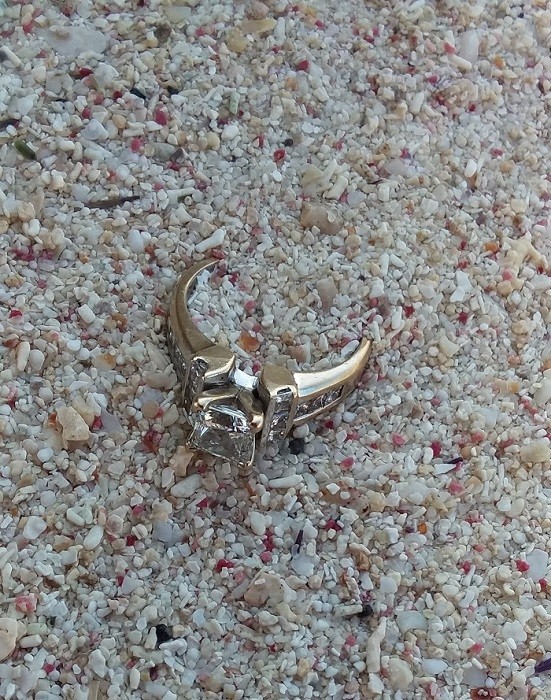
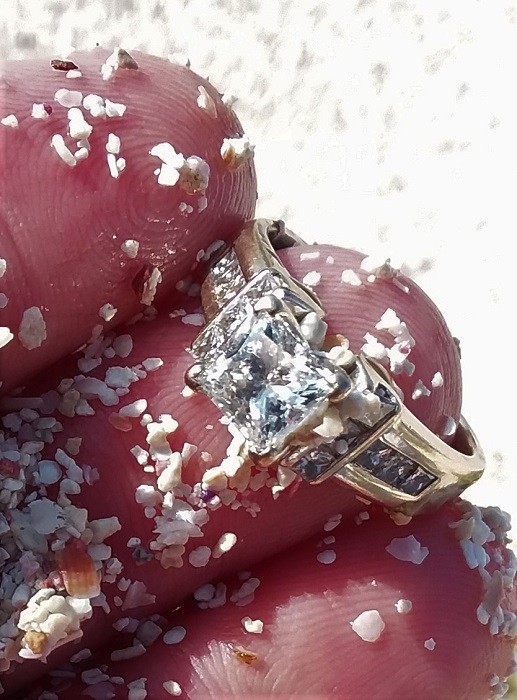
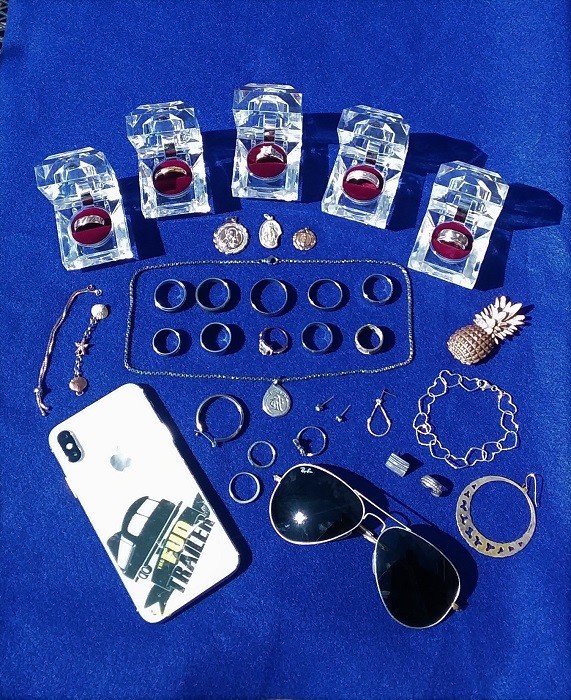
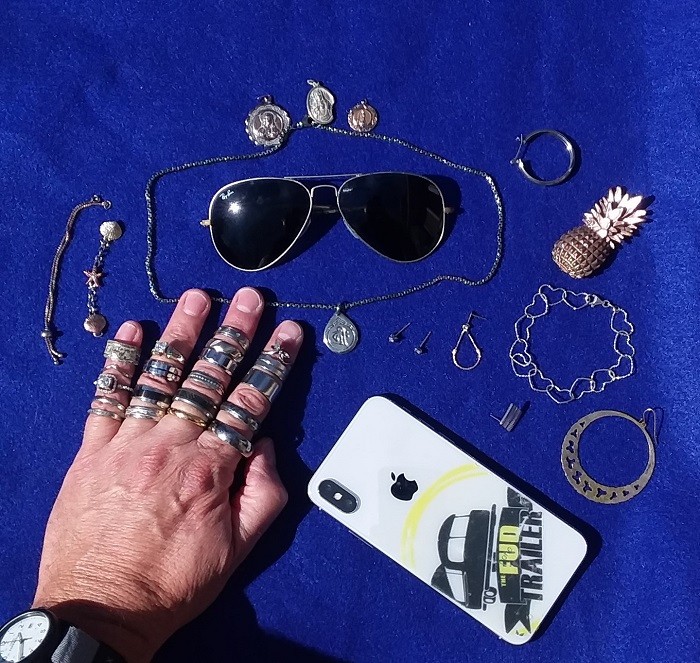
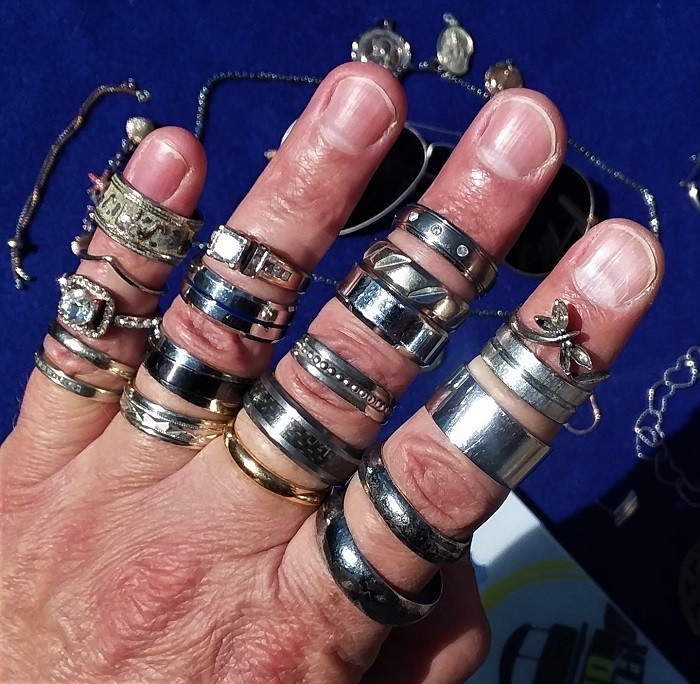
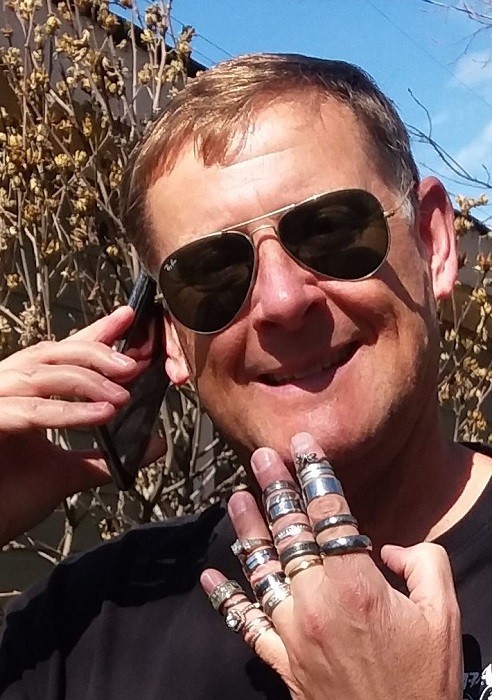
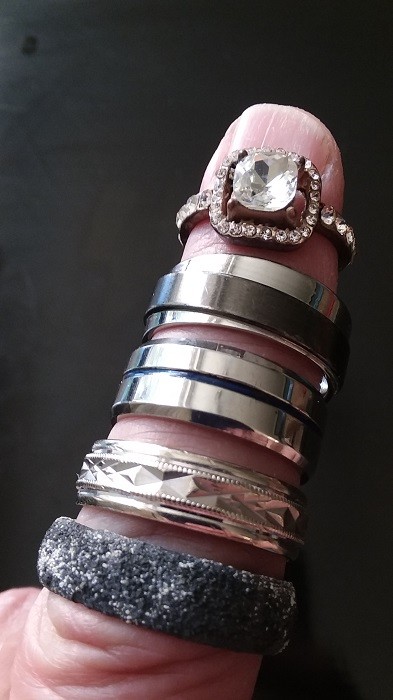
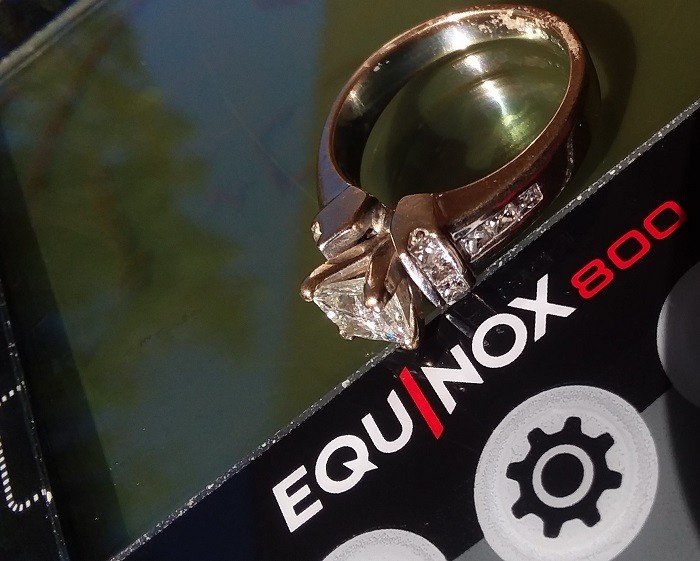
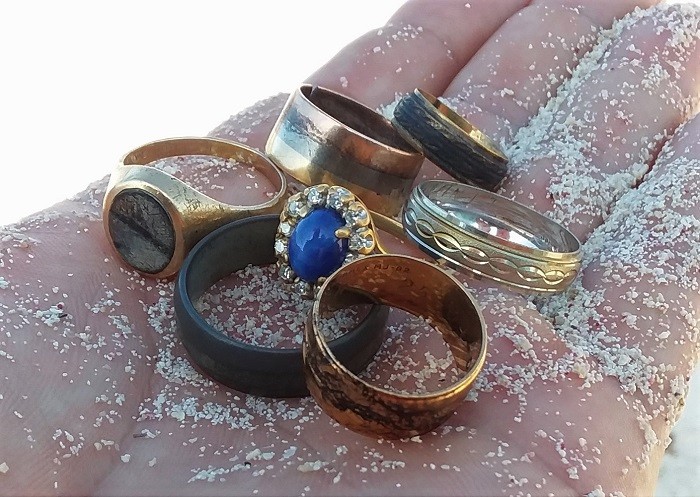
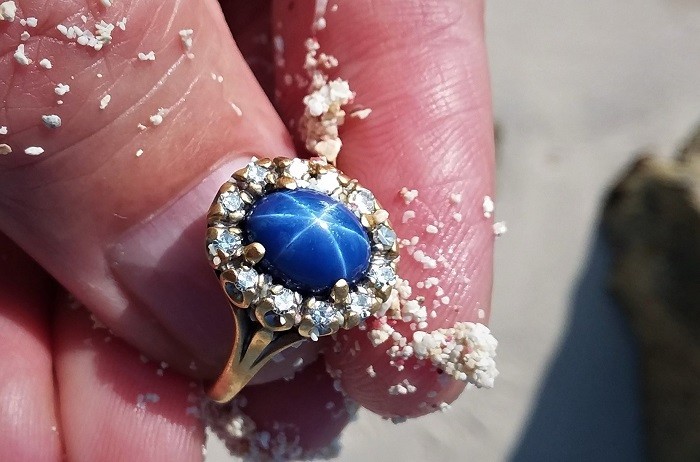
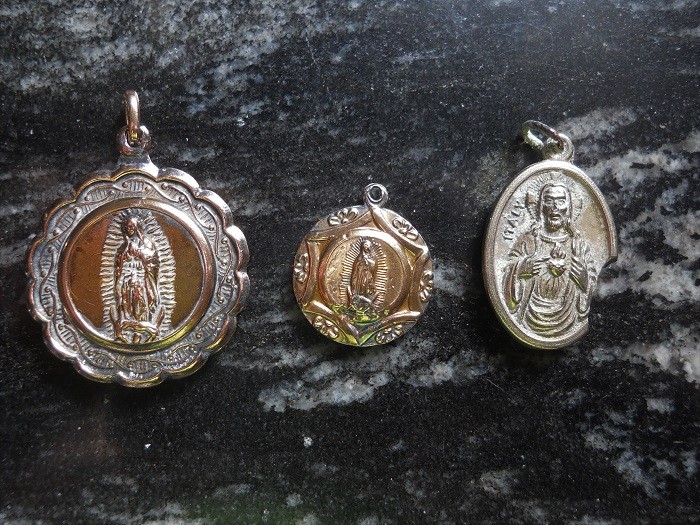
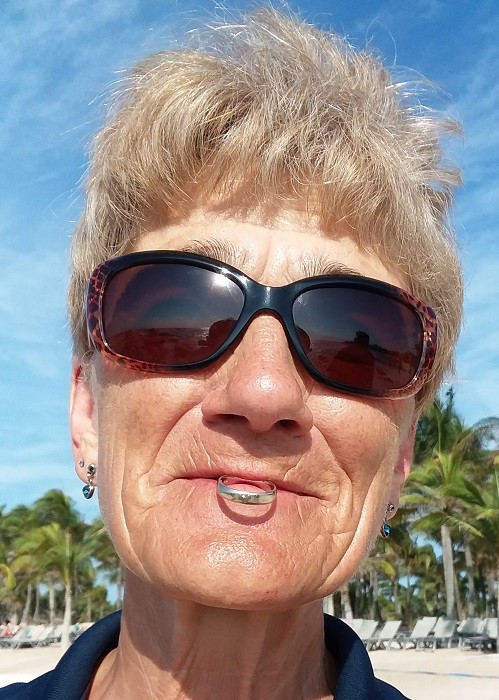
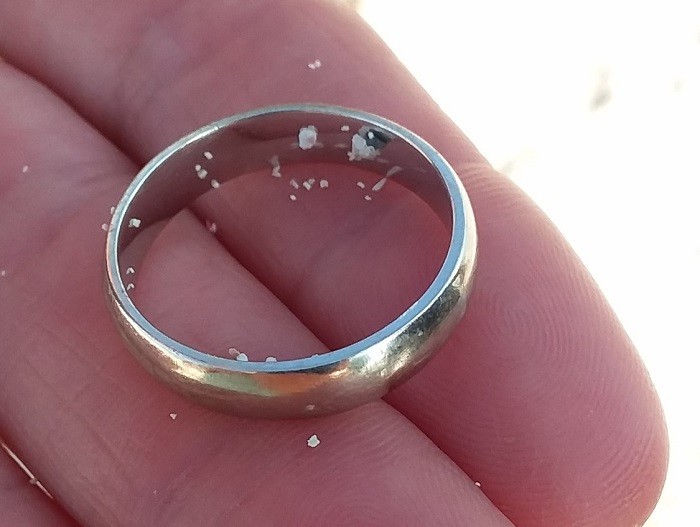
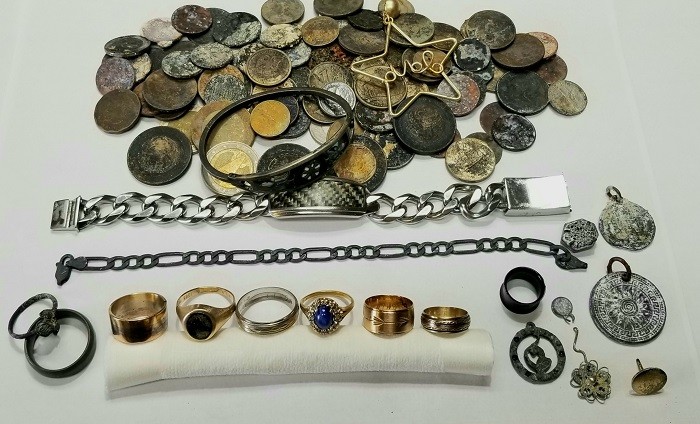

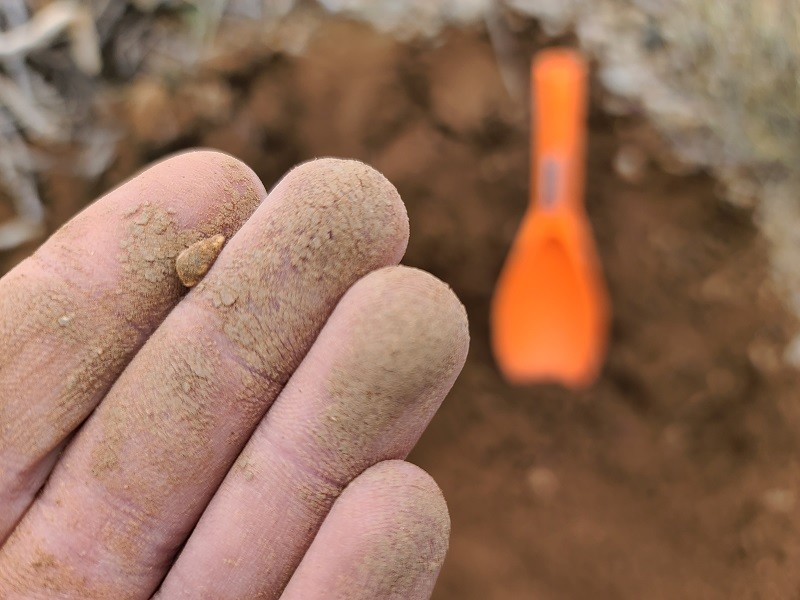
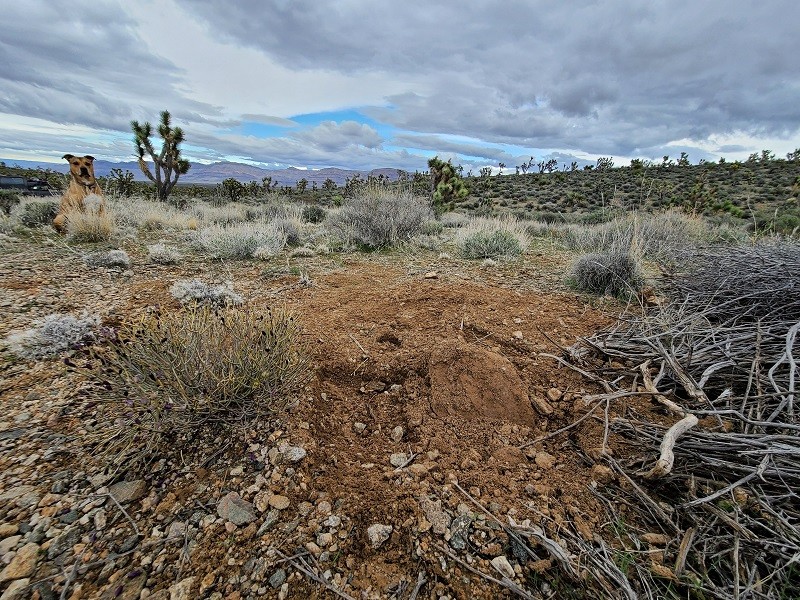
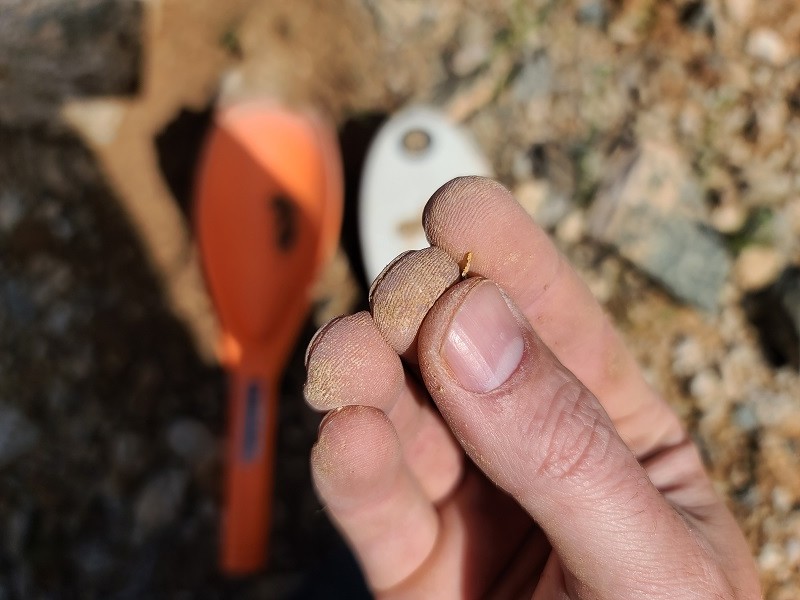
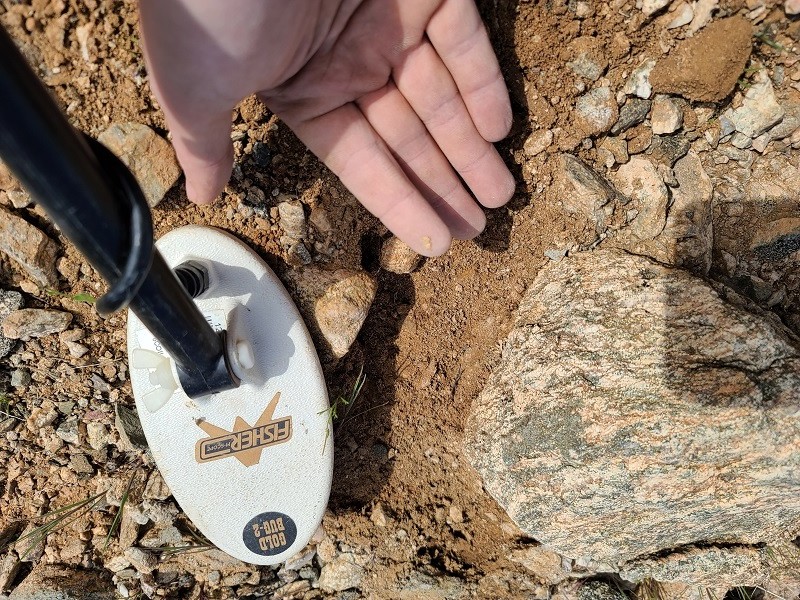
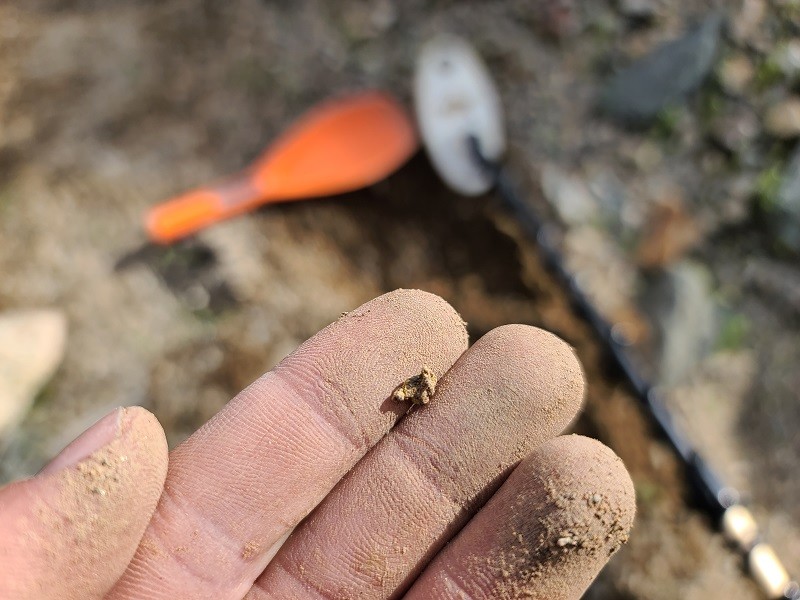
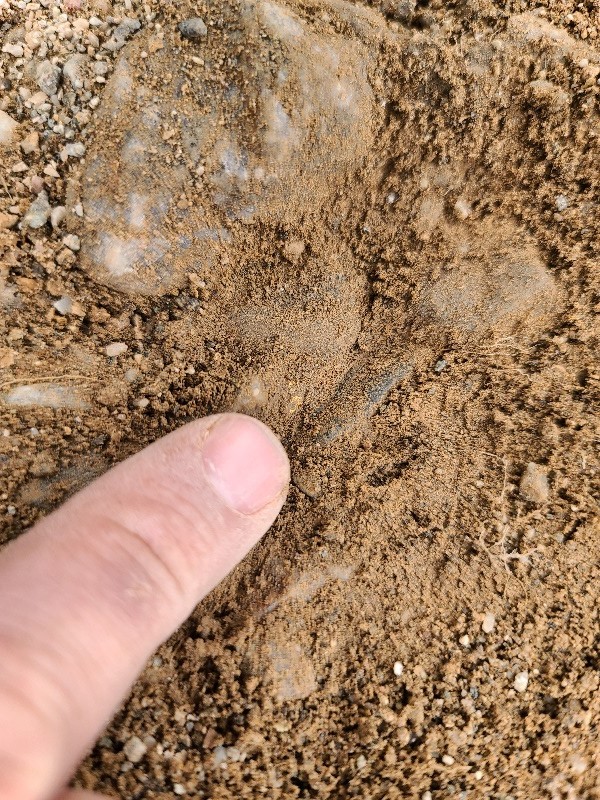
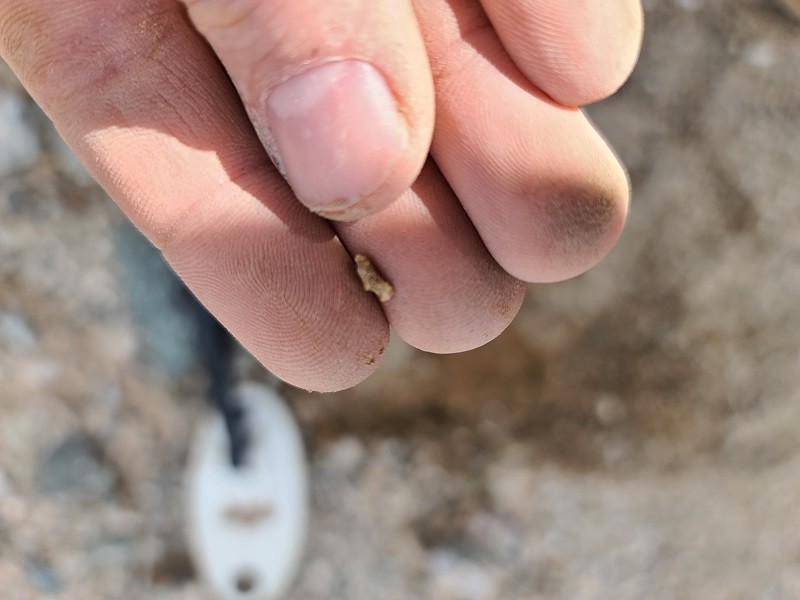
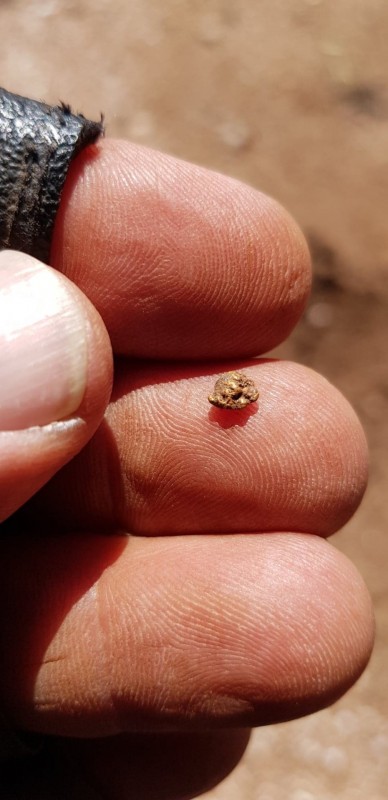
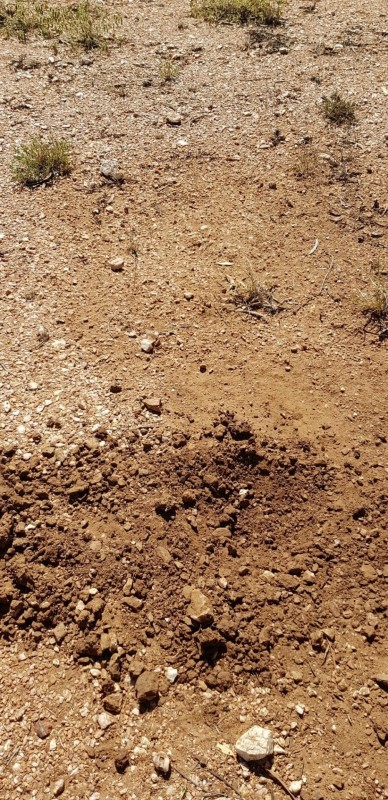
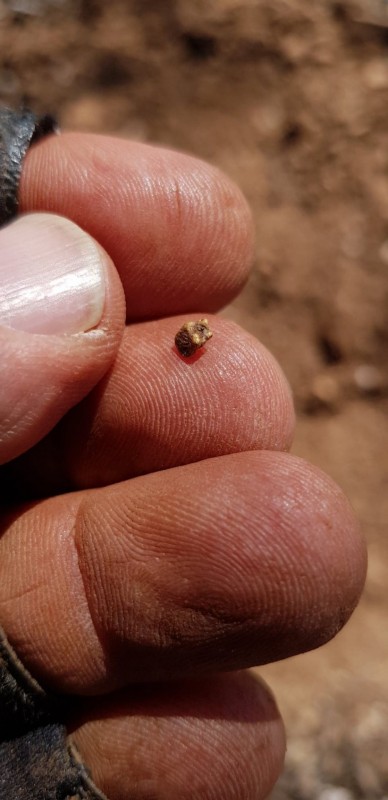
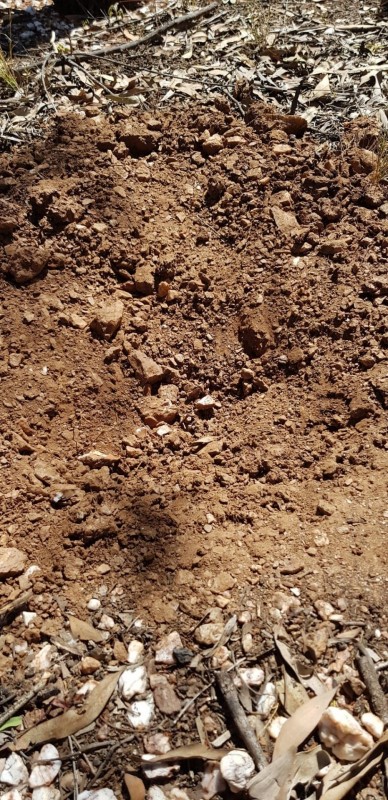
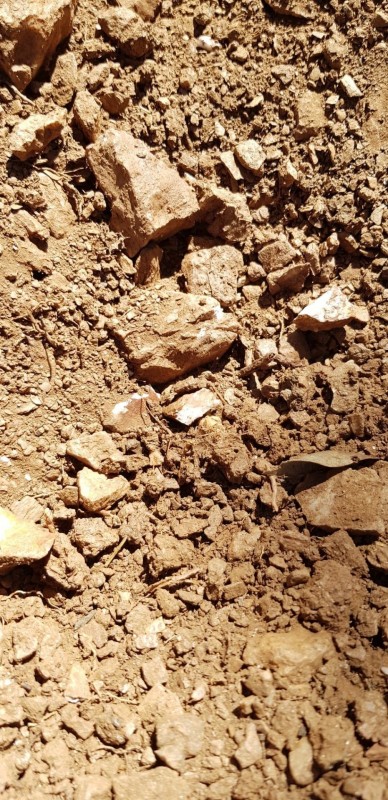
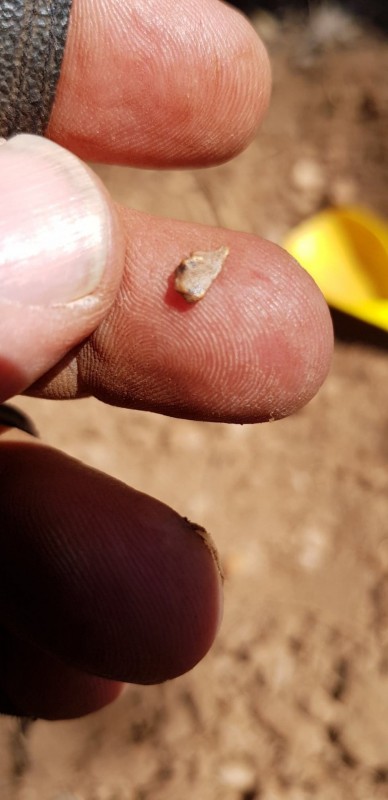
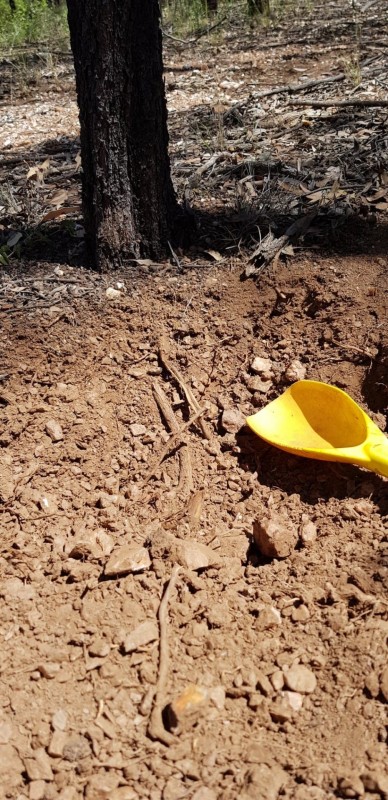
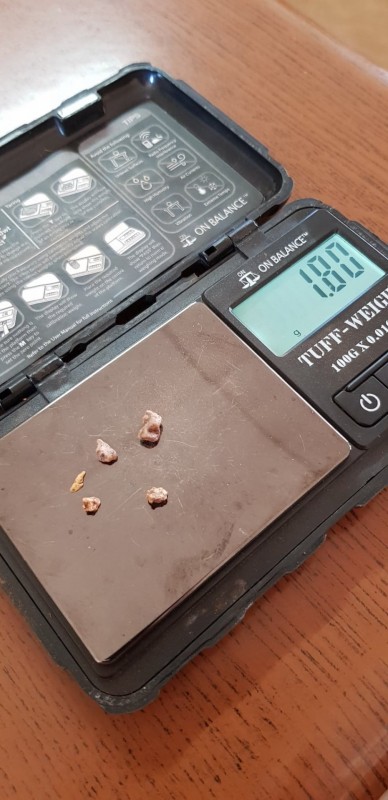
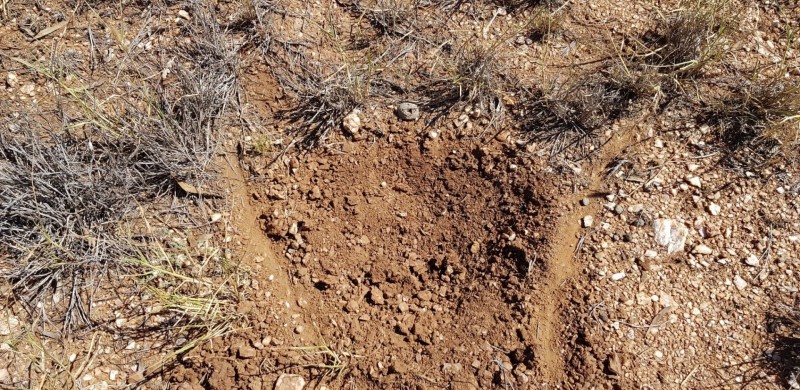
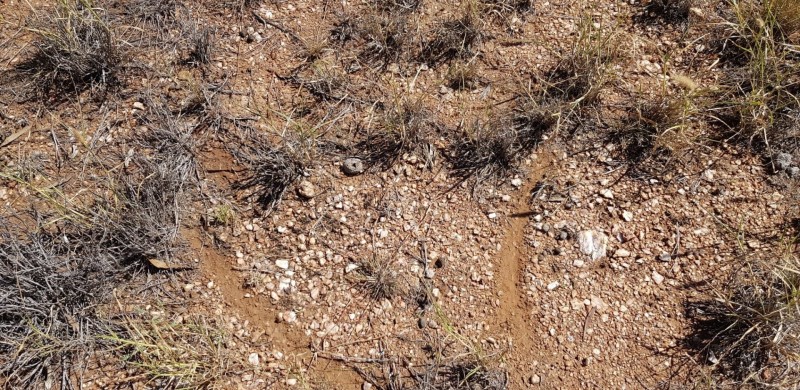
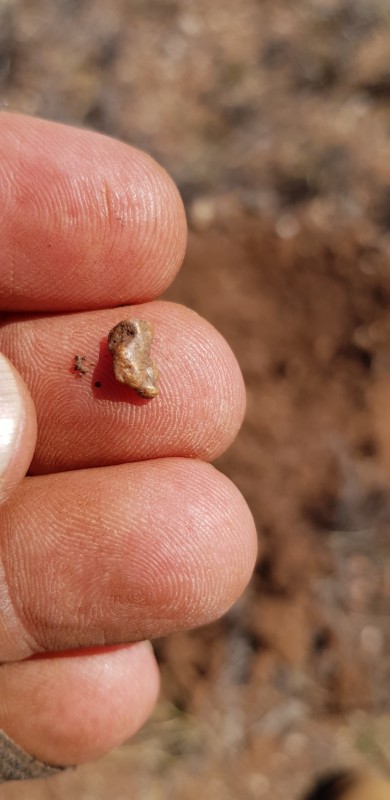

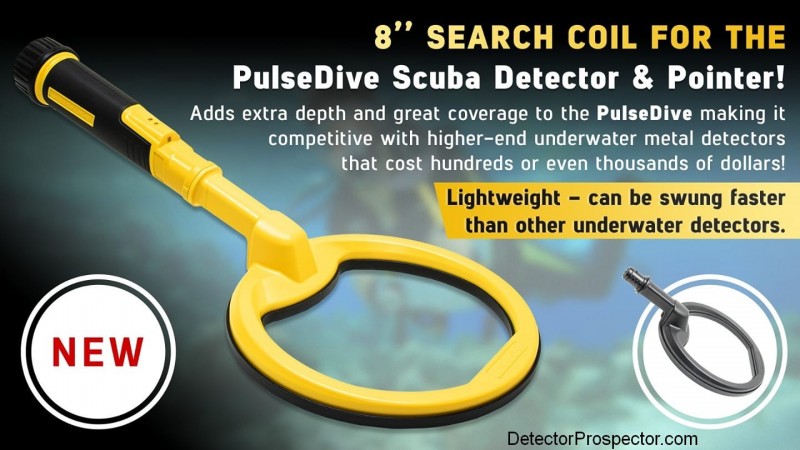
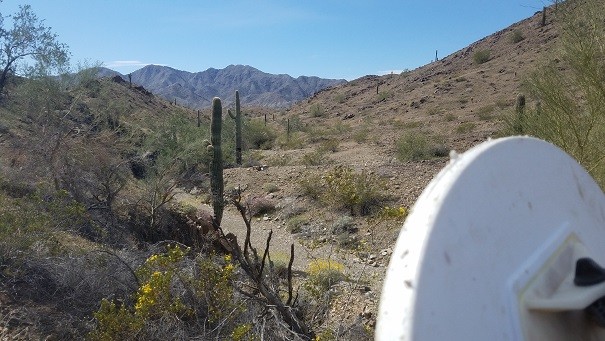
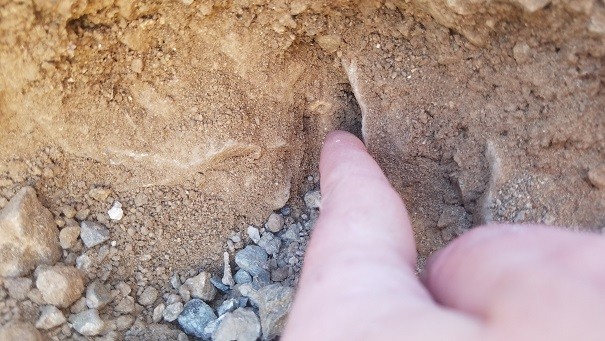
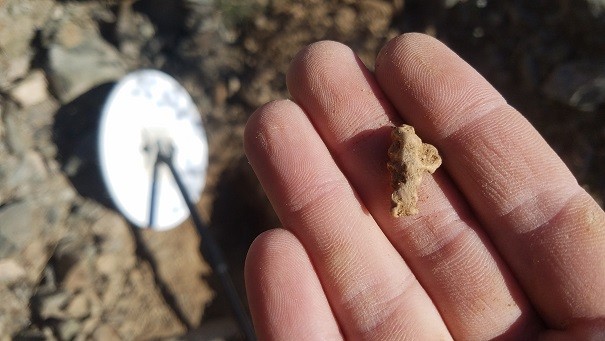
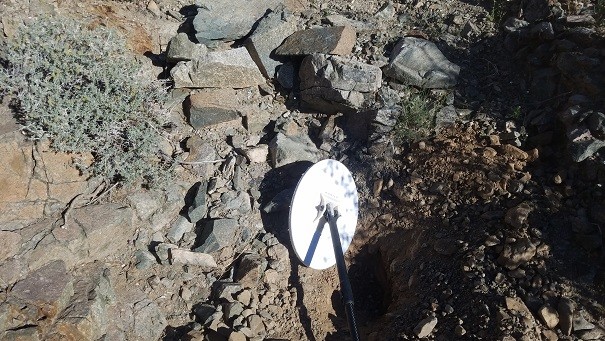
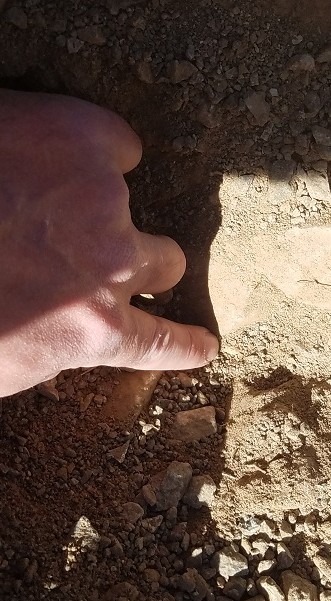
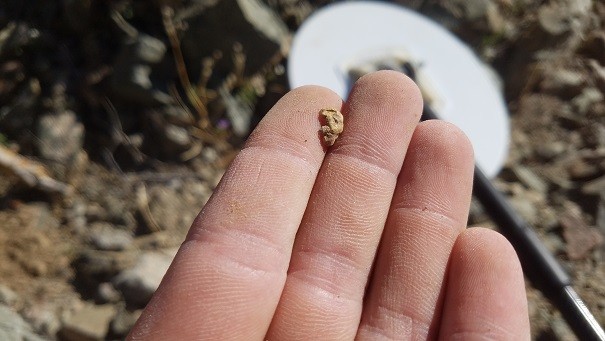
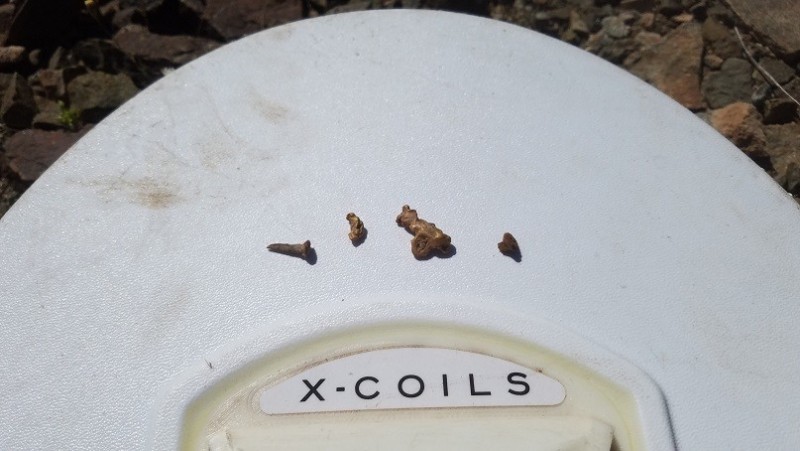
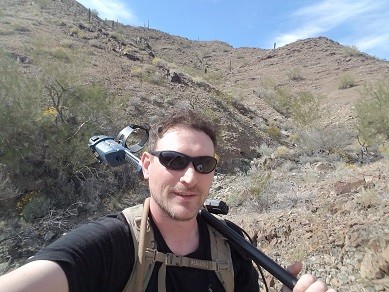
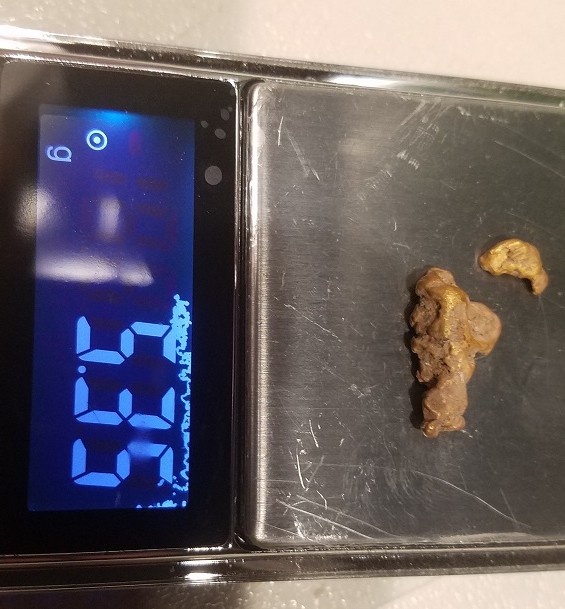
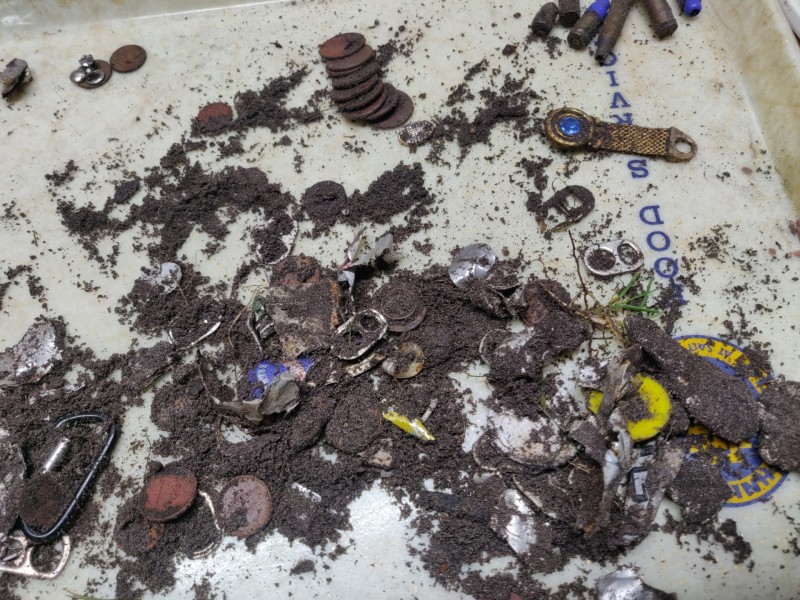
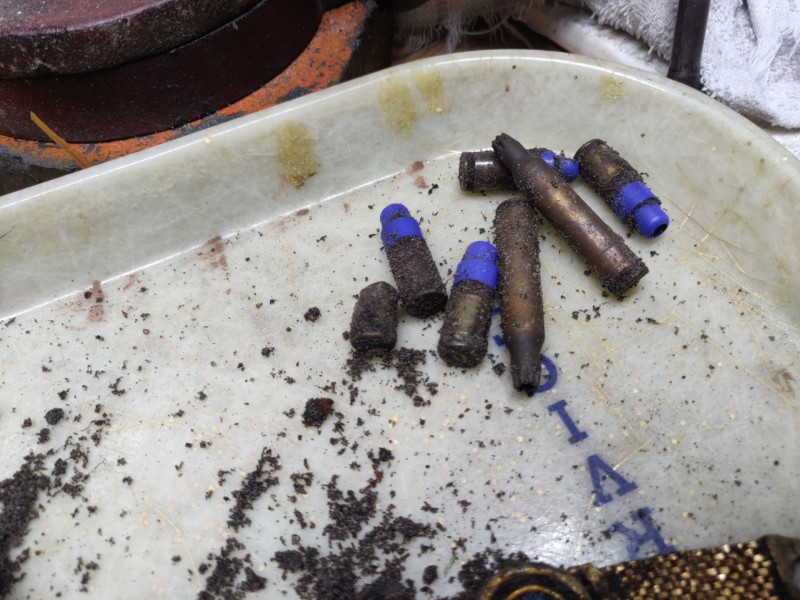
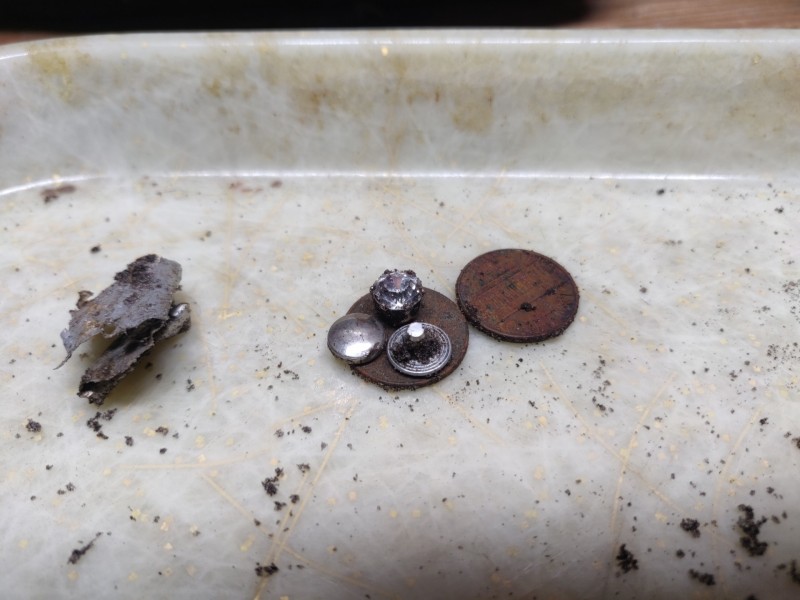
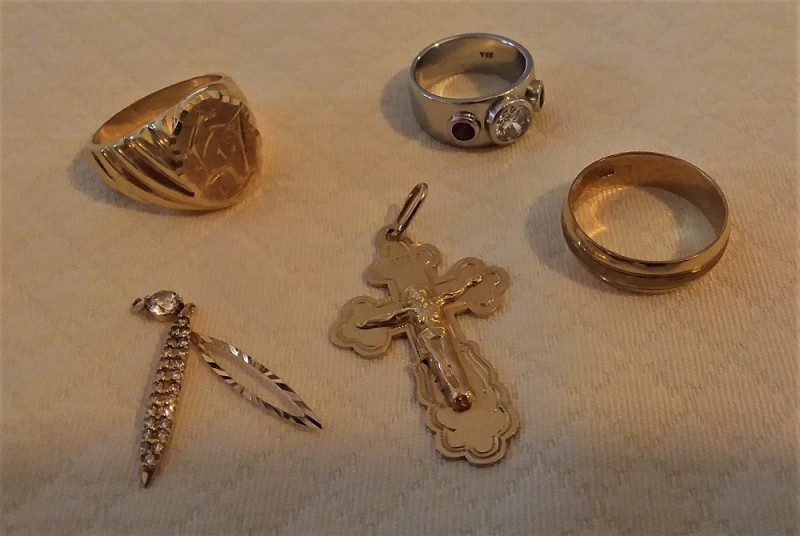
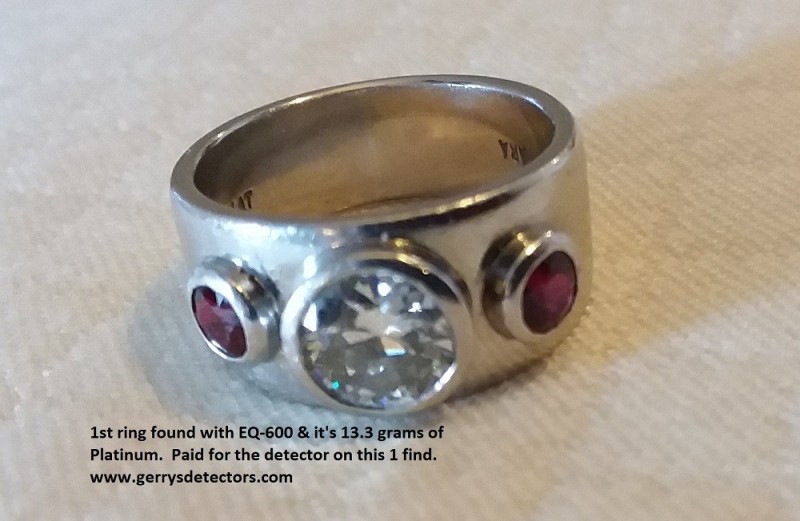
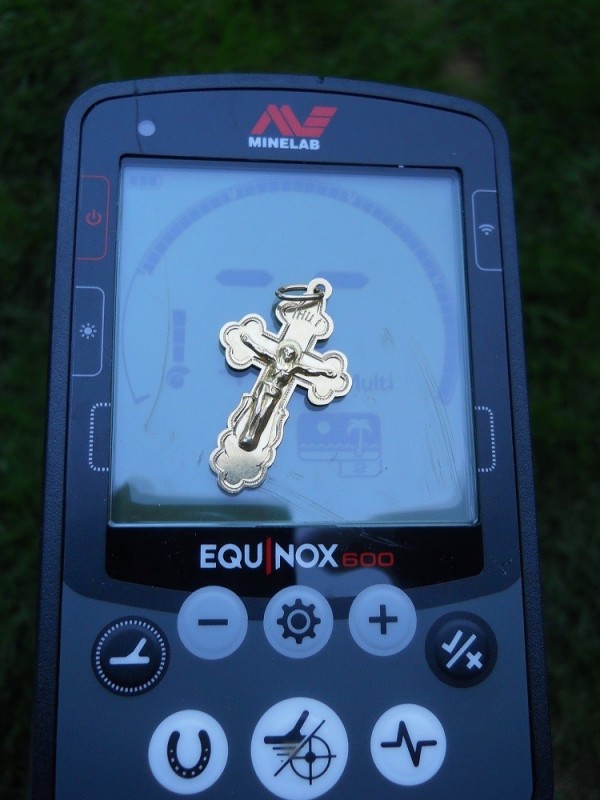
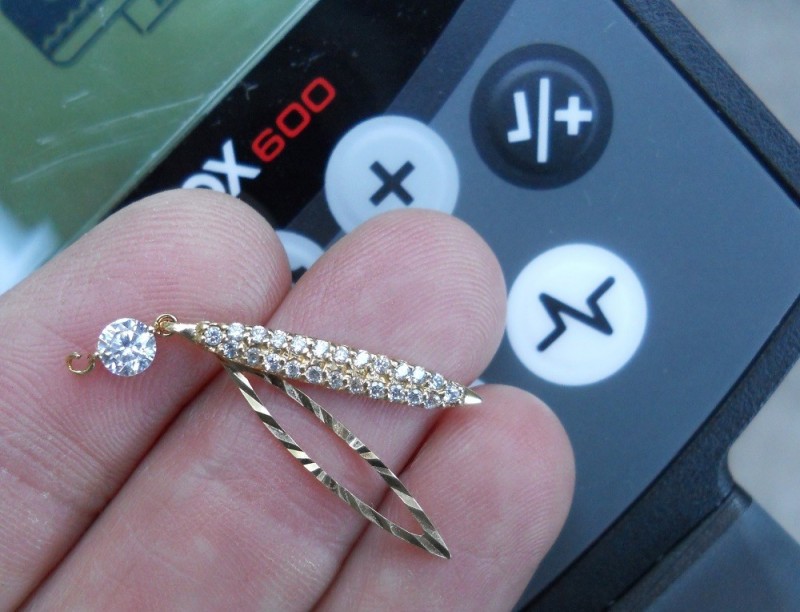
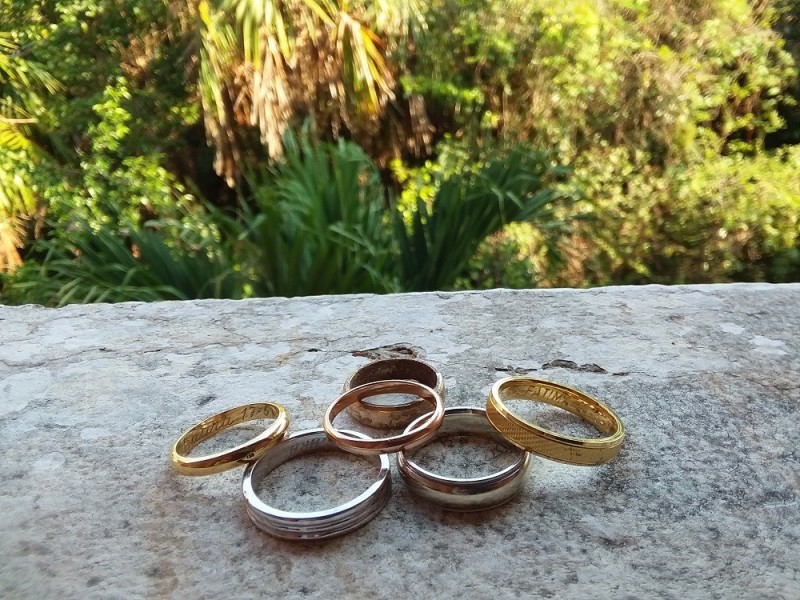
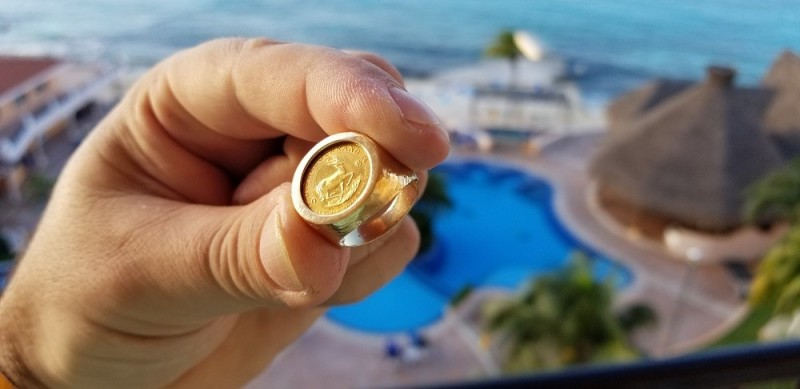
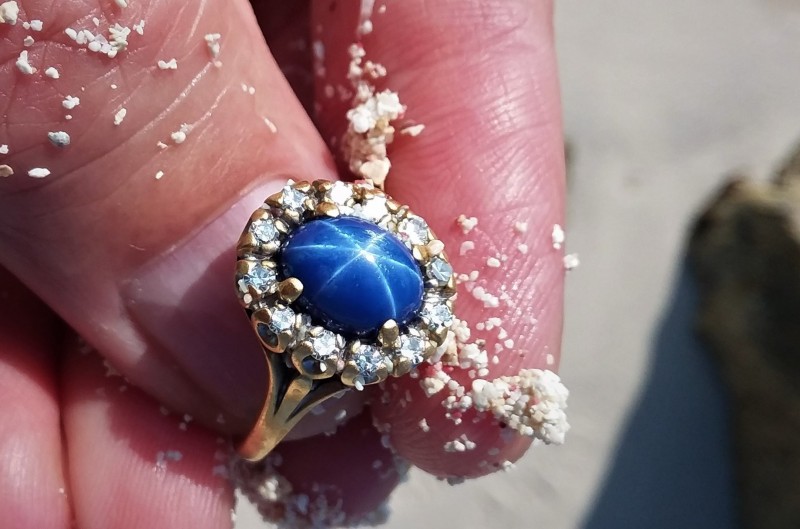
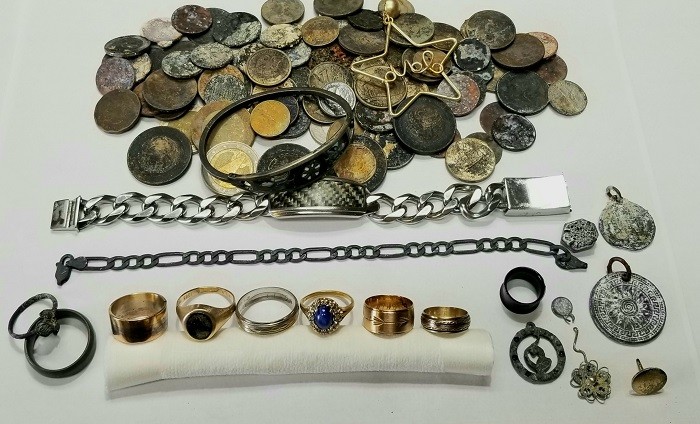

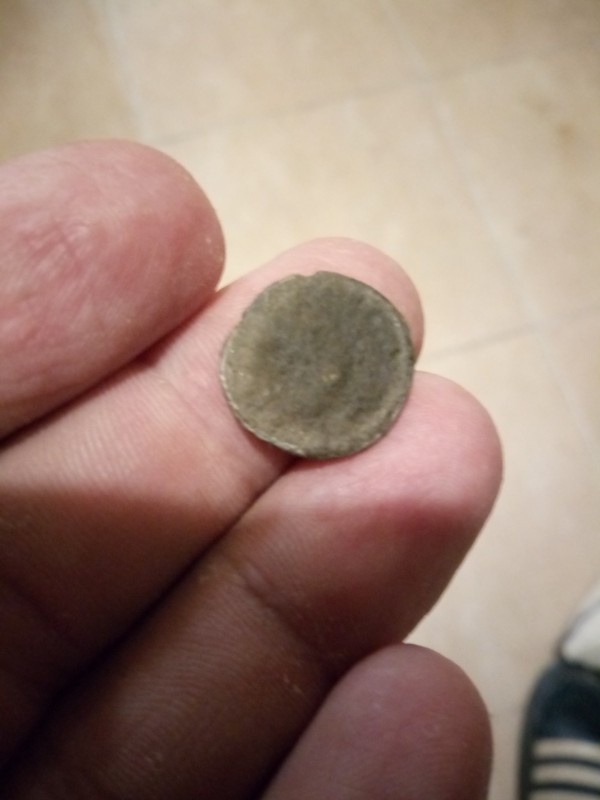
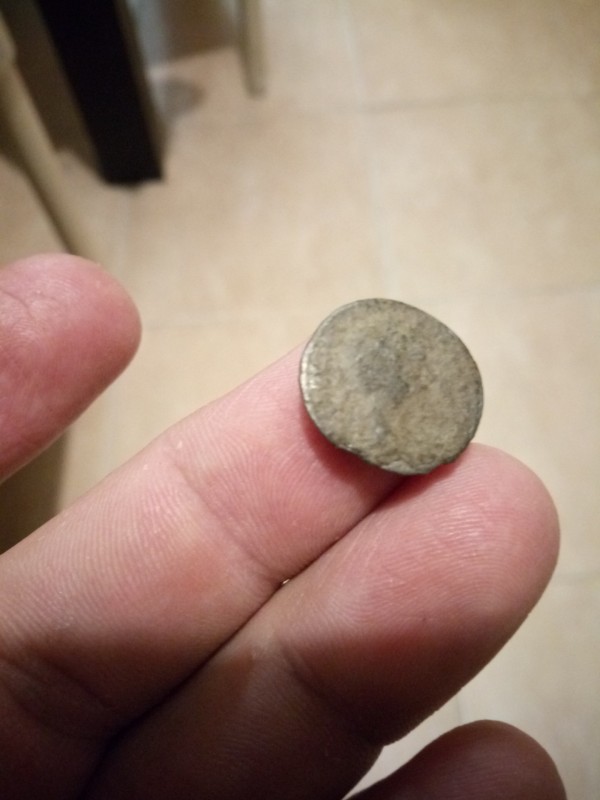
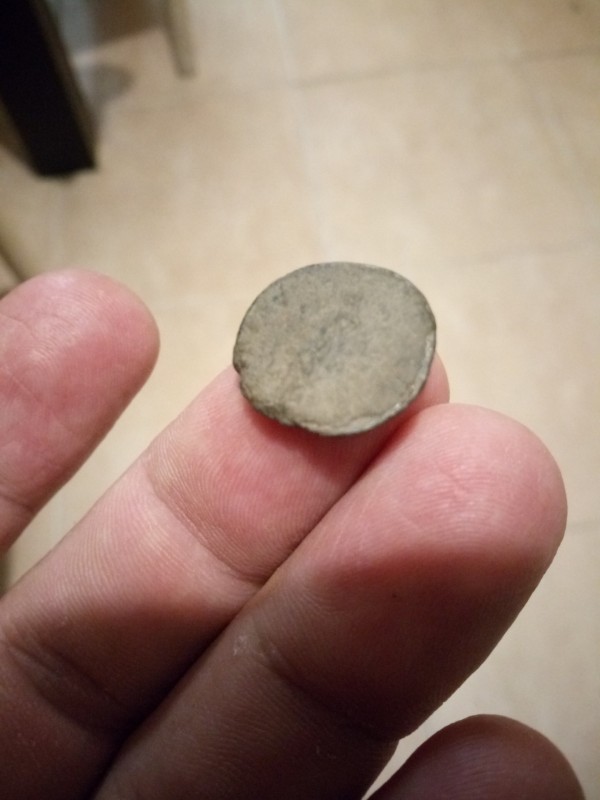
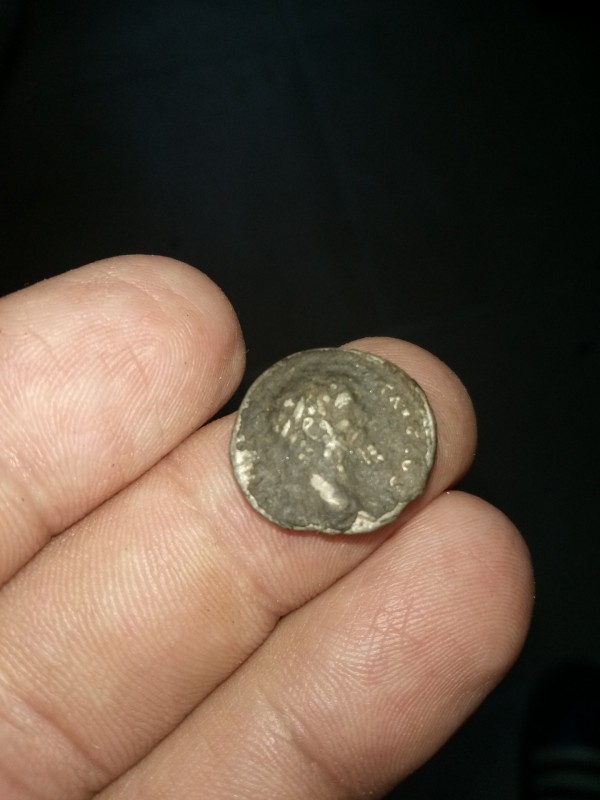
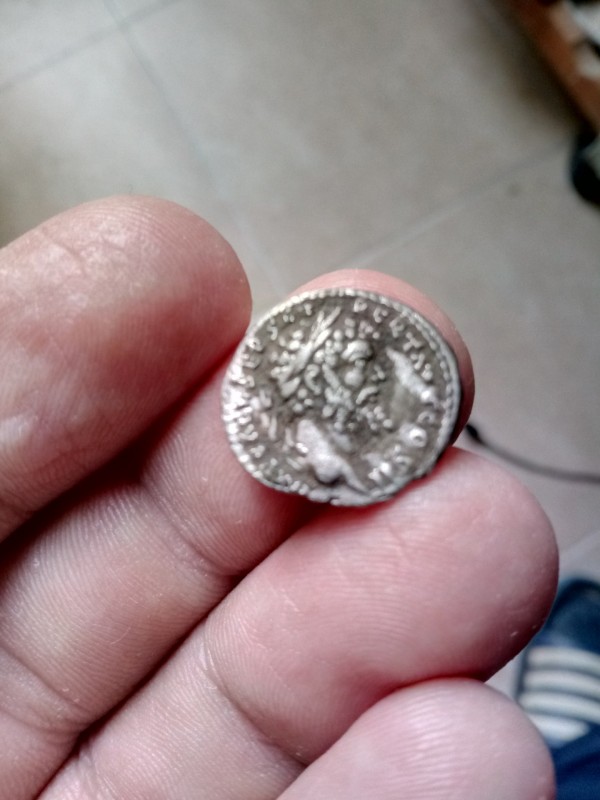
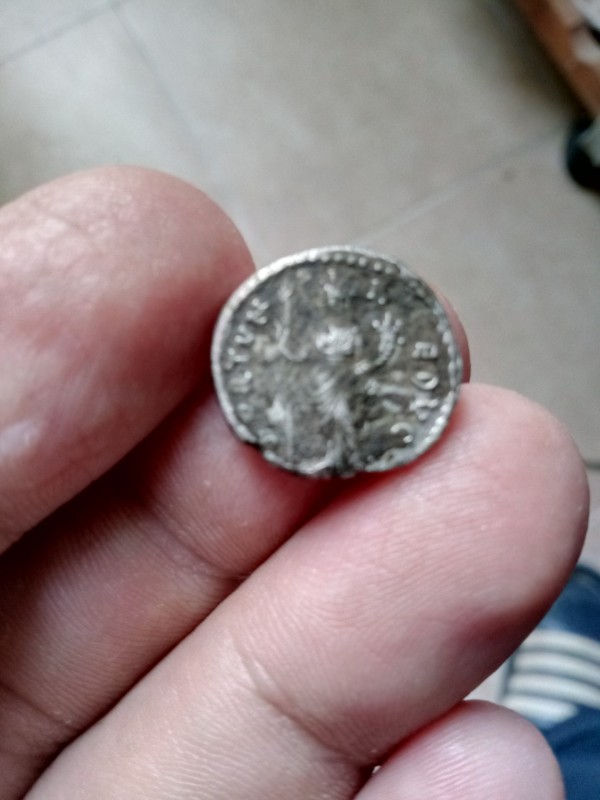
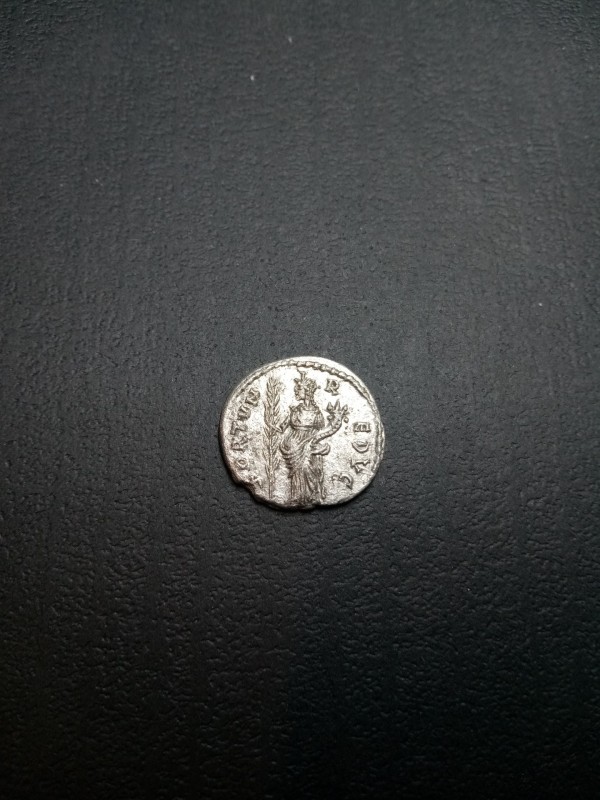
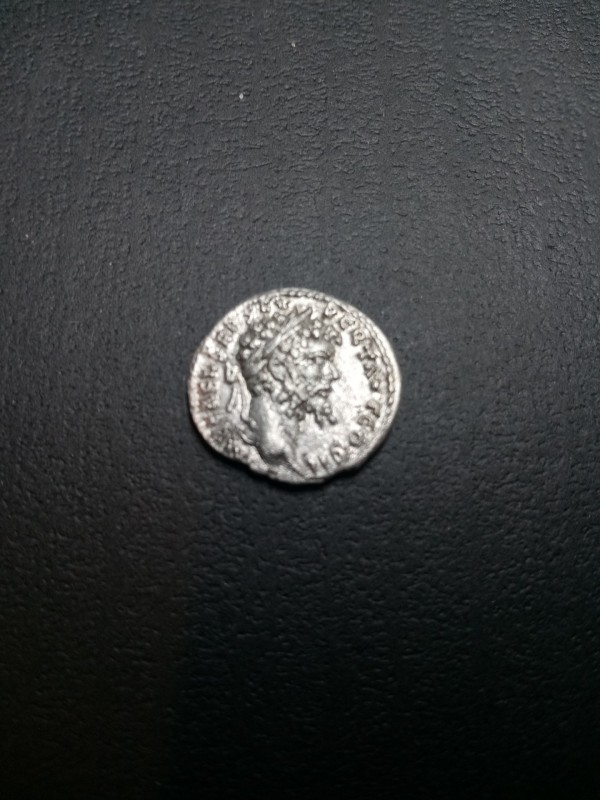

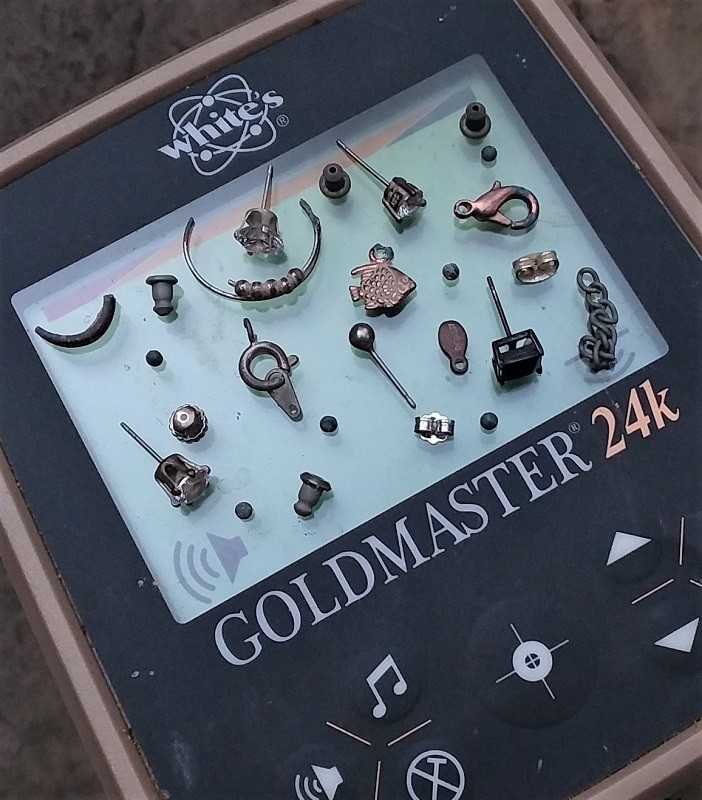
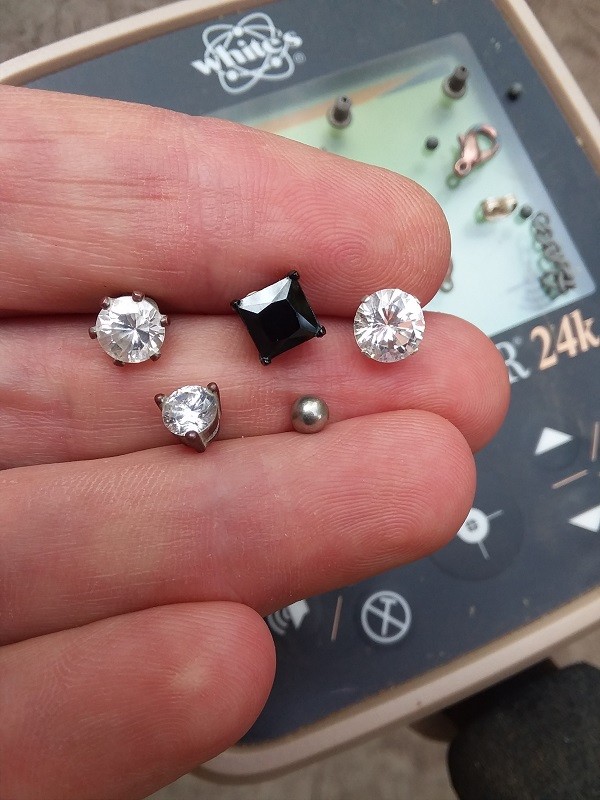
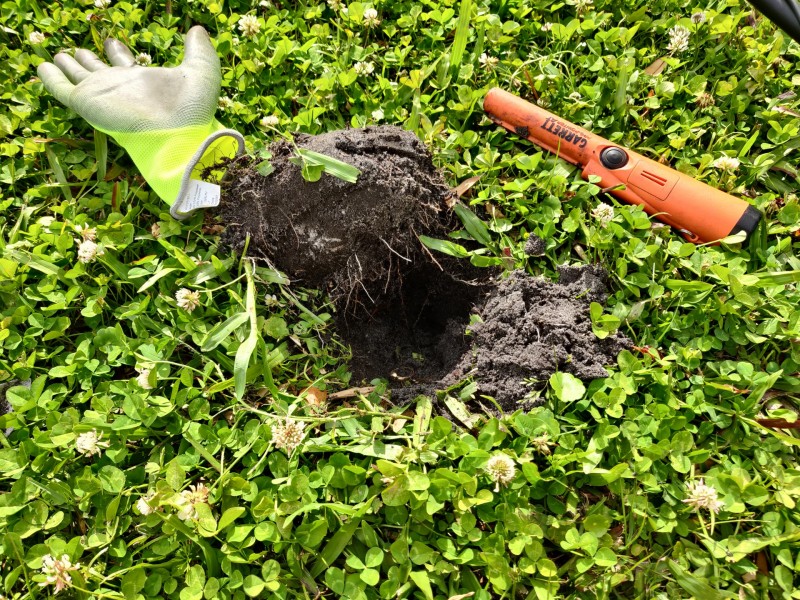
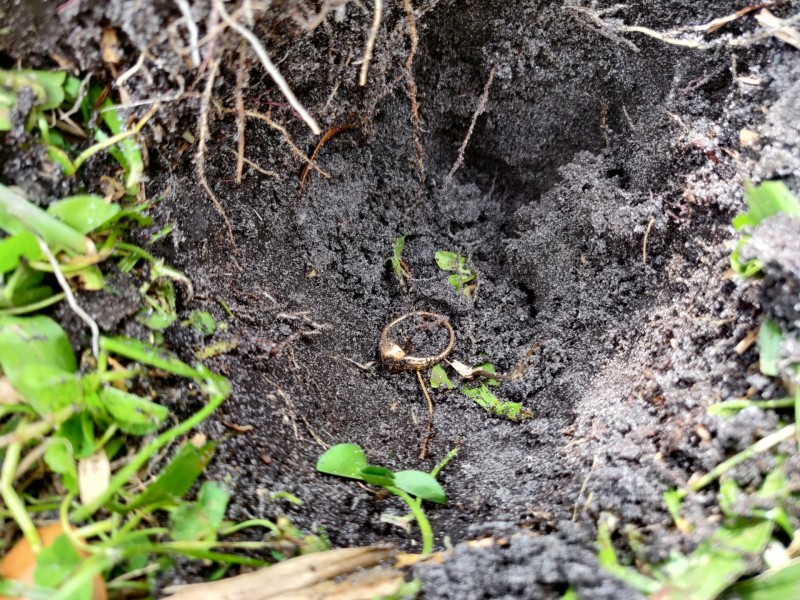
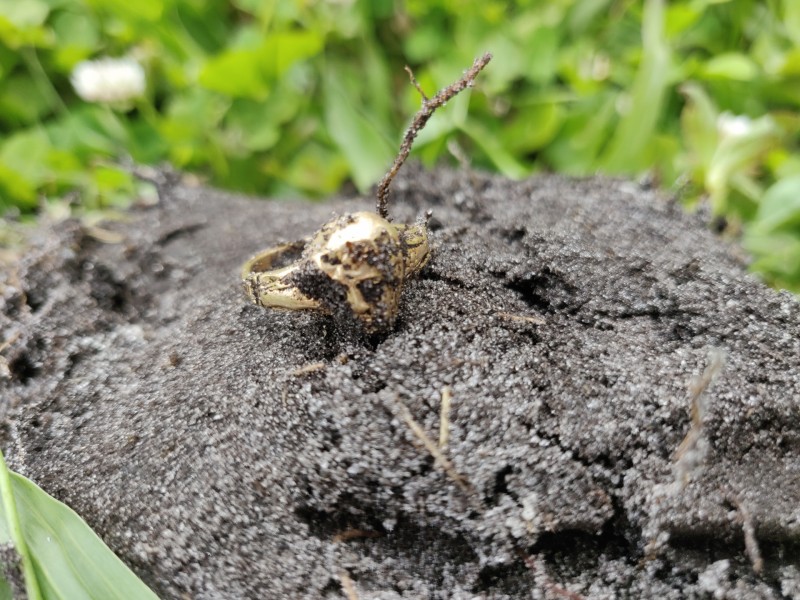
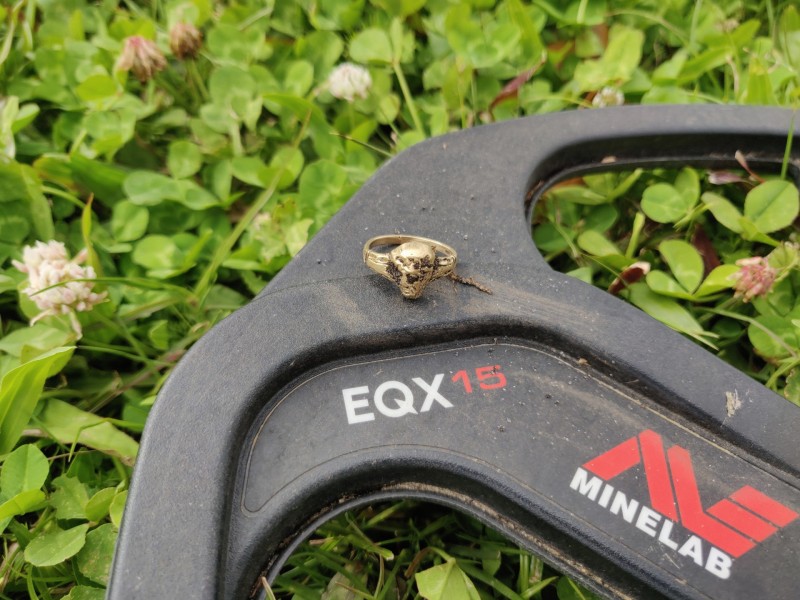
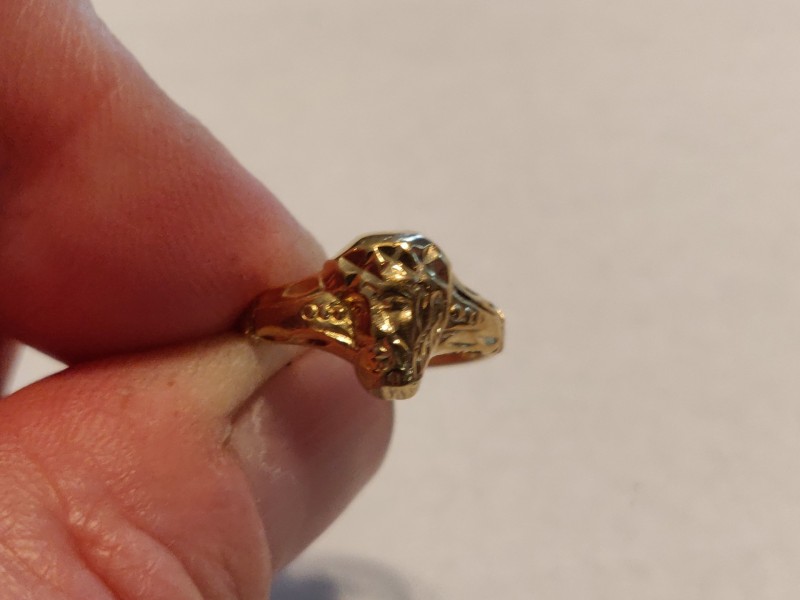
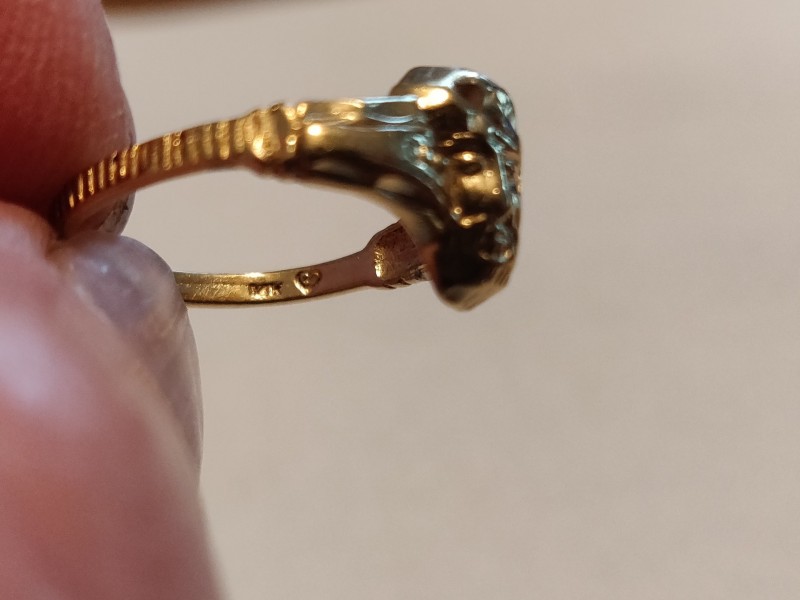

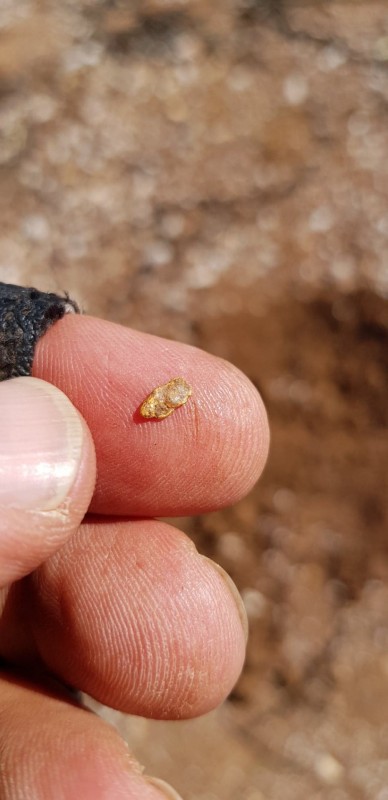
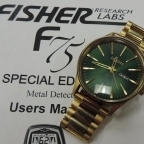

.thumb.jpg.d71314a45f3dc82bf75ac1b96e7e9201.jpg)
